Most large organizations have powerful software for every department, but this collection of applications often creates more friction than momentum. When teams work in disconnected silos, progress slows down and leaders lose sight of the big picture. The solution is to move beyond single-purpose applications and adopt a central platform that unifies people, data, and workflows.
This guide explores the landscape of modern enterprise software. We will cover the core benefits of a unified system, review 25 top solutions you should know (including monday work management) and walk through 5 essential steps for choosing the right platform for your team.
Try monday work managementUnderstanding enterprise software definition and meaning
Think of enterprise software as the central nervous system for a large organization. Unlike single-purpose apps, it’s designed to handle the massive complexity of connecting thousands of people across different departments. This is the heavy-duty framework for your most mission-critical work, built to scale and perform without fail.
The real difference lies in its ability to unify the entire business, breaking down the silos that slow teams down. It connects everything from HR and finance to marketing and operations, creating a single source of truth where data flows freely. This ensures everyone is aligned and working from the same playbook, not just managing their own small piece of the puzzle.
With so much at stake — from safeguarding sensitive information to ensuring teams work in sync —enterprise software should simplify complexity, not add to it. The right platform brings clarity and confidence, transforming scattered efforts into streamlined execution and enabling everyone to focus on what matters most.
True enterprise platforms set themselves apart by offering more than just basic features. They deliver a robust foundation that supports both today’s needs and tomorrow’s growth. To choose wisely, it’s important to recognize these defining characteristics:
- Connects the entire organization: Brings every team and department together on one platform, breaking down silos and enabling seamless collaboration.
- Integrates your essential tools: Works with the systems you already depend on — from HR to finance — so workflows stay unified and information flows freely.
- Scales as you grow: Built to adapt as your team expands, whether you have a hundred users or thousands, without sacrificing performance or agility.
- Keeps your work secure: Safeguards your organization’s data with strong security measures, permissions, and compliance features you can trust.
7 ways enterprise application software powers real results
Outdated systems and disconnected applications slow teams down, creating more chaos than progress. The best enterprise platforms change the game, bringing every workflow, department, and data source into one unified workspace. This isn’t just about reducing friction. It’s about empowering your organization to move faster, execute with confidence, and win in today’s competitive landscape.
Modern enterprise software goes far beyond basic task management. It transforms scattered efforts into seamless execution, automates the busywork, and delivers real-time visibility so leaders can make smarter decisions. The question is how you’ll leverage it to achieve real, measurable results.
- Breaks down silos for seamless collaboration: Connects every department, so teams work together instead of in isolation and handoffs become automatic.
- Centralizes data for real-time insights: Consolidates information into dynamic dashboards, empowering leaders to act on what’s happening right now — not last quarter.
- Automates routine work: Eliminates repetitive manual tasks with no-code automation, freeing up your people to focus on high-impact projects.
- Accelerates project delivery: Standardizes workflows, reduces bottlenecks, and keeps everything moving forward, so projects cross the finish line faster.
- Strengthens security and compliance: Built-in, enterprise-grade security keeps your data protected and your organization compliant as you grow.
- Enhances accountability and transparency: Everyone can see who’s doing what, when, and why — driving ownership and alignment at every level.
- Scales with your business: Whether you’re adding new teams or tackling more complex initiatives, the right platform adapts and grows with you, never holding you back.
Making this shift is transformational. It’s how organizations move from overwhelmed and reactive to synchronized and in control — ready to take on any challenge and turn strategy into results.
Try monday work management
25 enterprise software solutions you should know
With so many enterprise software options on the market, finding the right fit can feel overwhelming. To help you quickly compare your options, we’ve created a side-by-side table of all 25 leading platforms featured in this guide. Spot which solution aligns best with your goals, workflows, and budget at a glance.
| Platform | Use case | Free plan? | Notable feature | Starting price |
|---|---|---|---|---|
| monday work management | Connect projects, teams, and data in one hub | Yes | Highly customizable automations & dashboards | $9/user/month |
| Asana | Align goals, projects, and tasks across teams | Yes | Goal tracking tied to company objectives | $10.99/user/month |
| SAP | Unify finance, HR, supply chain & operations | No | Comprehensive ERP modules | Custom pricing |
| Smartsheet | Manage programs with spreadsheet-style workflows | No | Advanced automation with multiple view options | $12/user/month |
| Wrike | Coordinate multi-department campaigns & portfolios | Yes | AI Work Intelligence for risk prediction | $10/user/month |
| Jira | Track software development lifecycles at scale | Yes | Deep agile workflow customization | $7.53/user/month |
| IBM Cognos | Centralize analytics & reporting | No | AI-powered data exploration | $10/user/month |
| ClickUp | Consolidate tasks, docs, and workflows | Yes | Extreme customization with ClickUp Brain AI | $7/user/month |
| Zoho Projects | Manage projects with CRM & finance integration | Yes | Gantt charts with real-time progress | $4/user/month |
| Nifty | Unify remote teams’ planning & communication | Yes | AI-powered Orbit assistant | $7/user/month |
| ServiceNow | Automate and orchestrate IT, HR, and business workflows | No | Unified workflow automation platform | Custom pricing |
| Miro | Visual collaboration and process mapping | Yes | Infinite real-time digital whiteboard | $8/user/month |
| Hive | Centralize projects, messaging, and task workflows | Yes | Built-in messaging & HiveMind AI assistant | $12/user/month |
| Notion | Flexible workspaces for knowledge & project management | Yes | Block-based system & powerful AI features | $10/user/month |
| Airtable | Build custom apps for data and workflow management | Yes | Relational database with spreadsheet interface | $20/user/month |
| Adobe Workfront | Manage creative projects and marketing operations | No | Integrated with Adobe Creative Cloud | Custom pricing |
| Microsoft Project | Detailed scheduling & resource-heavy planning | No | Advanced Gantt charts and resource allocation | $10/user/month |
| Workday | Manage payroll, HR, and workforce planning at scale | No | Unified HR, finance, and planning suite | Custom pricing |
| Microsoft Dynamics 365 | Unify sales, service, finance, and operations | No | End-to-end CRM & ERP in the cloud | $65/user/month |
| GanttPro | Visualize timelines & dependencies with Gantt charts | No | Dynamic Gantt charts & resource management | $7/user/month |
| ProjectManager | Balance traditional planning with modern dashboards | No | Hybrid project views & real-time dashboards | $13/user/month |
| Zenhub | Manage sprints and roadmaps inside GitHub | Yes | Native GitHub integration & AI sprint planning | $8.33/user/month |
| Salesforce | Unify customer data, sales, and service | No | Customer 360 platform & Einstein AI | Custom pricing |
| Oracle NetSuite | Integrate ERP, CRM, and financials in the cloud | No | End-to-end ERP with unified data model | Custom pricing |
| HubSpot | Connect marketing, sales, and service workflows | Yes | All-in-one CRM with project integration | Free (basic CRM); paid plans vary |
1. monday work management
Scattered enterprise software often leads to disconnected teams and lost visibility, but a unified Work OS can bring every department, project, and process together in one place. With customizable workflows and intuitive visual project management, monday work management makes it easy for organizations to scale operations while staying in control. Trusted by 225,000 customers across more than 200 industries and 190+ countries, it delivers the agility and results enterprises need — without the complexity.
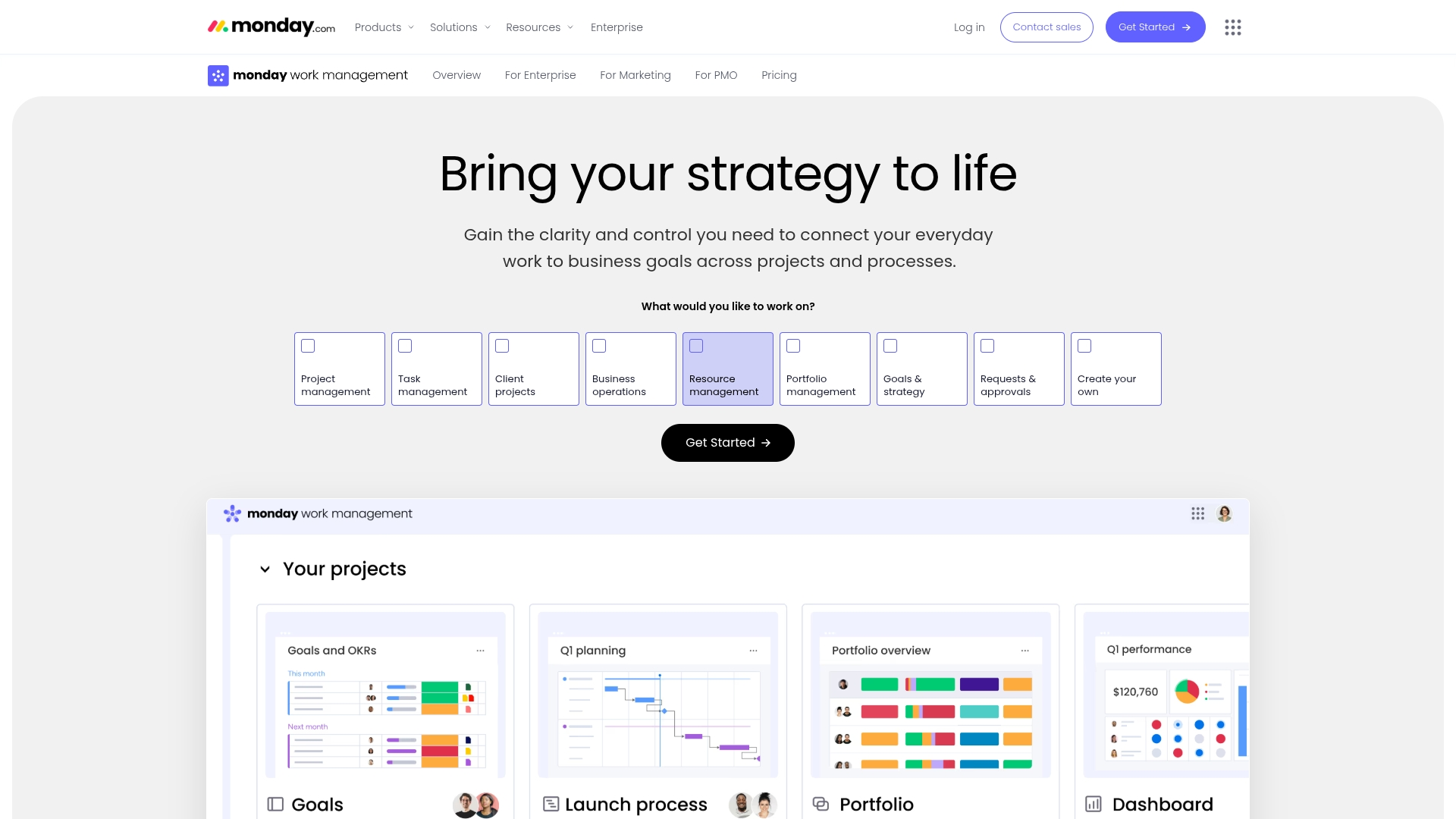
Use case: Enterprises needing to connect projects, departments, and data in one hub
Key features
- Flexes to fit any team structure or process, breaking down organizational silos and making cross-functional collaboration effortless
- Multi-layered permissions and advanced security controls keep data protected and your organization compliant
- Data comes together in customizable dashboards so leaders get instant, actionable insights to drive confident decision-making at scale
Pricing
- Free: $0 forever for up to 2 seats with 3 boards, unlimited docs, and 200+ templates
- Basic: $9 per seat/month with unlimited viewers, 5GB storage, and dashboards based on 1 board
- Standard: $12 per seat/month including timeline & Gantt views, 250 monthly automations, and dashboards combining up to 5 boards
- Pro: $19 per seat/month with advanced features, 25,000 monthly automations, and dashboards combining up to 20 boards
- Enterprise: Custom pricing with 250,000 monthly automations, advanced security, and dashboards combining up to 50 boards
- Annual billing saves 18% (minimum of 3 seats required)
- All paid plans include 500 AI credits per month per account
- Nonprofit discounts available
Why it stands out
- Recognized as a Leader in three Gartner® Magic Quadrant™ reports: Collaborative Work Management, Adaptive Project Management & Reporting, and Marketing Work Management
- Received the Highest User Adoption for Enterprises award from G2, recognizing exceptional team engagement
- Delivers a less than 4-month payback period, according to a Forrester Total Economic Impact™ study
Advanced AI features
- Automatic risk detection: Instantly flags potential portfolio risks so leaders can address issues before they disrupt timelines.
- AI-generated project plans: Breaks down strategic initiatives into clear, actionable tasks and phases in seconds.
- Actionable workflows on demand: Transforms high-level ideas into ready-to-execute project plans, empowering teams to move from strategy to action faster.
Automations & Integrations
- No-code automation engine: monday work management lets you automate repetitive tasks and processes across teams—no technical expertise required. Choose from a library of pre-built automation recipes or build custom workflows to eliminate manual work at scale.
- 200+ native integrations: Seamlessly connect with the tools your organization already relies on, including Salesforce, Jira, Microsoft Teams, and more. Real-time data sync ensures a single source of truth and brings clarity to every workflow.
- Enterprise-scale workflow orchestration: With robust API access and automation capacity to handle up to 250,000 actions monthly, even the largest organizations can standardize processes, streamline operations, and maintain flexibility as they grow.
2. Asana
Clarity is the foundation of Asana’s approach to orchestrating work, from small projects to strategic initiatives. It brings everyone’s tasks, plans, and goals together in one shared space, giving teams the confidence they need to hit their goals faster. The platform is built to help everyone understand how their work connects to the bigger picture.
Use case: Large teams wanting to align goals, projects, and tasks across functions
Key features
- Flexible project views including List, Board, Timeline, and Calendar to visualize work in the way that makes the most sense for your team
- Automation through custom Rules that streamline workflows, reduce manual tasks, and ensure processes are followed consistently
- Goal tracking that connects company objectives to the work being done to achieve them, giving everyone a direct sense of purpose
Pricing
- Basic: Free forever for individuals or teams just getting started
- Premium: $10.99/month per user (billed annually)
- Business: $24.99/month per user (billed annually)
- Enterprise: Custom pricing (contact sales)
- The free plan supports up to 15 team members with unlimited tasks, projects, and messages.
Considerations
- Advanced reporting and workload management features are only available on higher-tier paid plans, which may limit smaller teams seeking more robust insights.
- Some users report a steep learning curve when managing large, complex projects due to the broad feature set and interface complexity.
Want to see how Asana stacks up against monday work management? Read our in-depth comparison.
3. SAP
SAP stands as a global leader in enterprise resource planning (ERP), offering a unified digital backbone that powers some of the world’s most complex organizations. Rather than patching together disparate systems, SAP provides a single platform where every department — from finance and HR to supply chain and operations — can work together seamlessly. With decades of innovation and millions of users worldwide, SAP is trusted by enterprises who need robust, scalable solutions that drive real business outcomes.
Use case: Global enterprises needing to unify finance, supply chain, HR, and operations
Key features
- Comprehensive ERP modules covering finance, HR, procurement, supply chain, sales, and more — integrated by design
- Real-time analytics and dashboards that turn massive data sets into actionable insights for confident decision-making
- Industry-specific solutions and deep integration capabilities with leading applications and cloud services
Pricing
Custom pricing based on organization size, modules selected, and deployment (cloud, on-premises, or hybrid) with implementation and support services available as add-ons
Considerations
- Implementation can be complex and resource-intensive, making it best suited for organizations ready to invest in long-term digital transformation
- Requires change management to ensure successful adoption across all business units
4. Smartsheet
For organizations rooted in spreadsheet workflows but needing more power, Smartsheet bridges the gap by transforming the familiar grid into a dynamic work management engine. The platform specializes in this transition from simple data management to complex project orchestration, making it ideal for businesses that need enterprise-grade functionality without abandoning familiar processes.
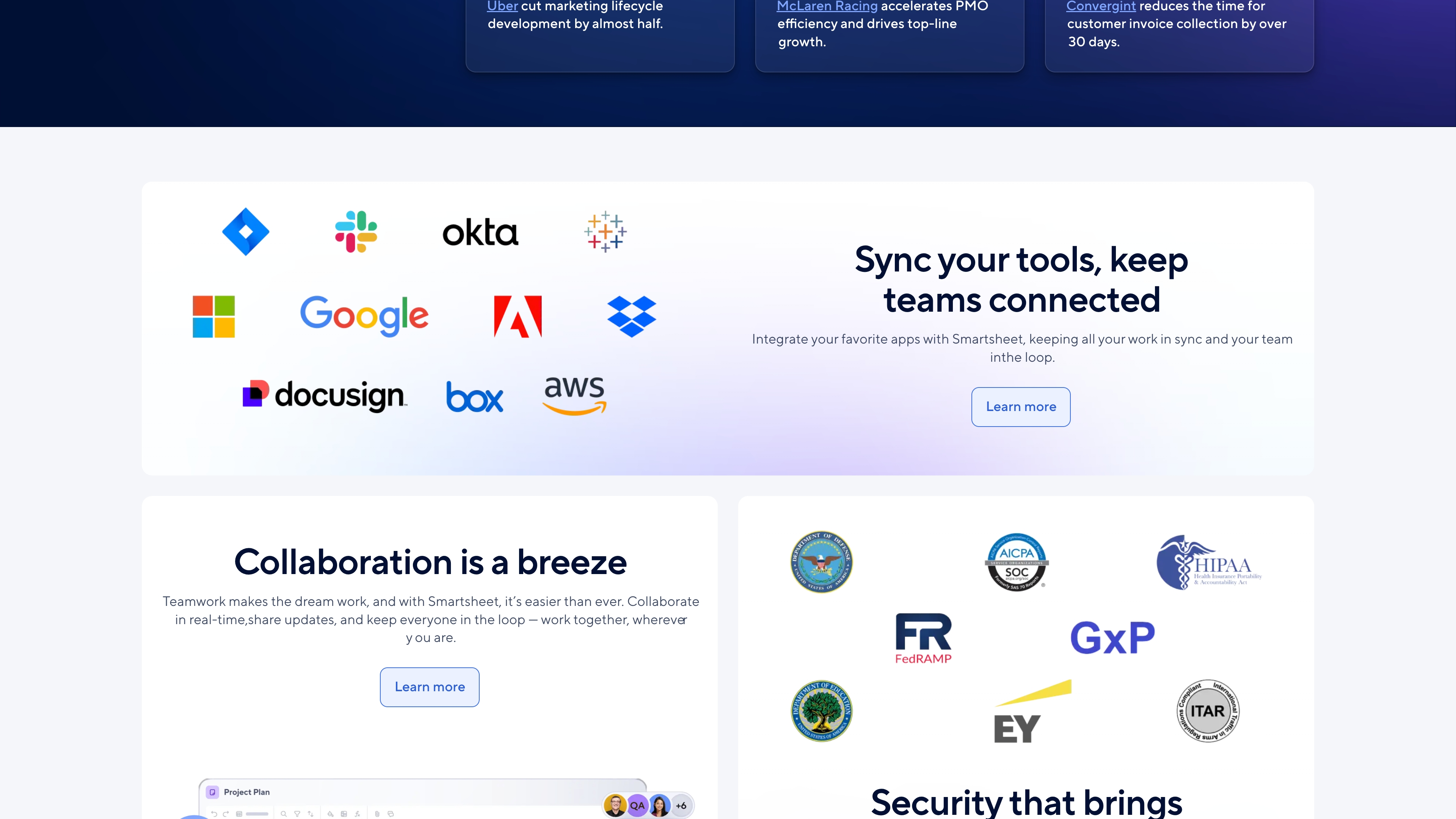
Use case: Organizations needing to manage complex programs with spreadsheet-style workflows
Key features
- Multiple view options including Grid, Gantt, Card, and Calendar views to visualize work according to team preferences
- Advanced automation capabilities with 250+ automations per month on basic plans and unlimited automations on higher tiers
- Robust reporting and dashboard functionality with 30+ customizable widgets for real-time insights into project progress and team performance
Pricing
- Pro: $12/month per member (1-10 members, unlimited viewers)
- Business: $25/month per member (3+ members, unlimited guests and viewers)
- Enterprise: Custom pricing (10+ members minimum)
- Advanced Work Management: Custom pricing with premium features and integrations
- Add-ons like Dynamic View start at $125/month and Data Shuttle starts at $100/month
Considerations
- Steep learning curve for advanced features, particularly for users new to project management software
- Mobile app lacks functionality compared to the desktop version and has reported performance issues
5. Wrike
Handling intricate project portfolios and multi-departmental workflows is where Wrike’s comprehensive platform excels. It provides robust work management and collaboration capabilities for teams of all sizes, from small businesses to large enterprises. The platform is particularly valuable for organizations managing complex processes, thanks to its powerful automation engine and customizable reporting tools.
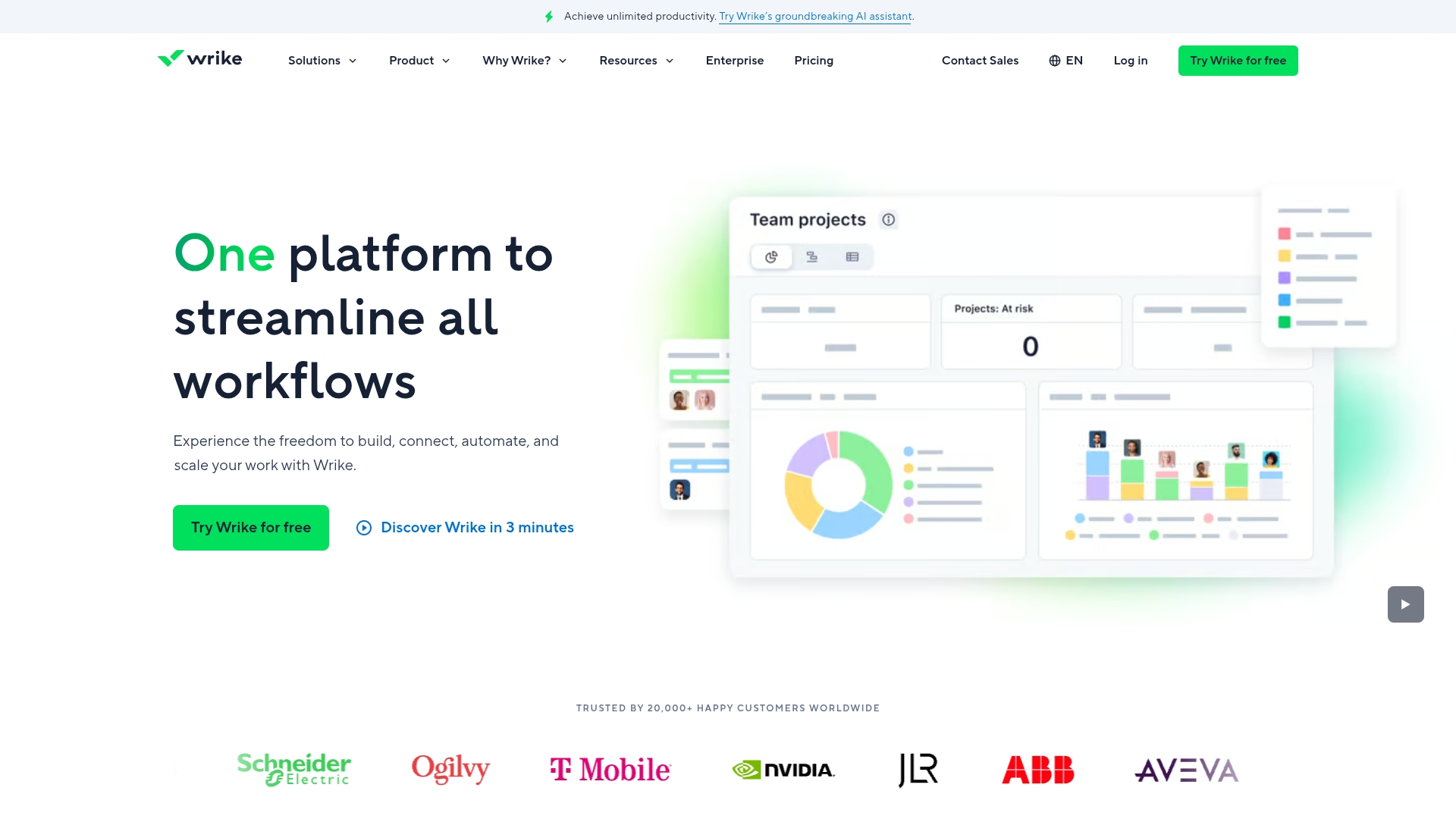
Use case: Enterprises seeking to coordinate multi-department campaigns and portfolios
Key features
- AI-powered Work Intelligence (available on all plans) that helps with content creation and summaries, automates tasks, predicts project risks, and provides smart insights to speed up decision-making
- Custom item types and workflows that reflect your team’s unique processes, allowing you to build a library of reusable work templates
- Advanced reporting and analytics with real-time dashboards, customizable reports, and instant alerts for proactive project management
Pricing
- Free: $0/month for basic task and project management.
- Team: $10/month per user (billed annually) for teams of 2-15 users, including 2 GB of storage per user and 50 automated actions per user/month.
- Business: $25/month per user (billed annually) for teams of 5-200 users, including advanced reporting, 5 GB of storage per user, and 200 automated actions per user/month.
- Enterprise: Custom pricing for teams of 5+ users, with SAML SSO, advanced permissions, and 10 GB of storage per user.
- Pinnacle: Custom pricing for complex needs, available for teams of 5+ users, with advanced analytics, budget planning software features, and 15 GB of storage per user.
- All plans include a 14-day free trial with no credit card required.
Considerations
- The extensive feature set can create a steep learning curve, so be prepared for some team training time.
- The pricing model requires a minimum number of users for paid plans (2 for Team, 5 for Business and above), which might not be ideal for very small teams or solo users.
Curious how Wrike compares to monday work management? Read our in-depth comparison.
6. Jira
Built by and for agile development teams, Jira serves as the central command center for the entire software development lifecycle. This enterprise software platform transforms complex software development workflows into structured, trackable processes that keep teams aligned and projects on schedule. With its deep integration capabilities and customizable workflows, Jira is the go-to for technical teams managing everything from bug fixes to major product launches.
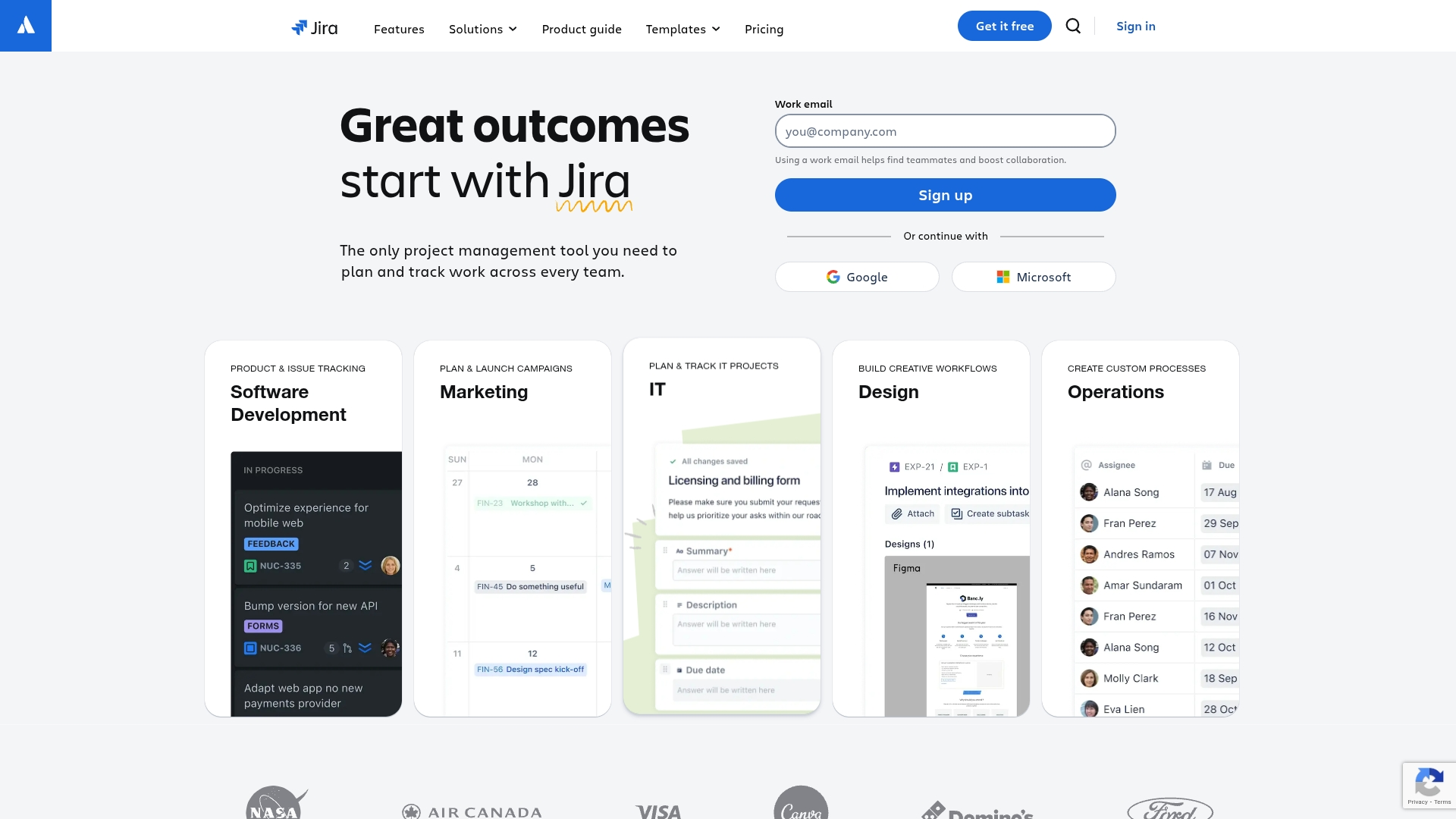
Use case: Software teams needing to track agile development lifecycles at scale
Key features
- Customizable workflows that adapt to any development process, from simple bug tracking to complex multi-team projects
- Advanced reporting and analytics with real-time dashboards that provide insights into team performance and project progress
- Seamless integration with over 1,800 marketplace apps and development platforms like GitHub, Bitbucket, and Confluence
Pricing
- Free: $0/month for up to 10 users with 2 GB storage
- Standard: $7.53 per user/month with 250 GB storage and business hours support
- Premium: $13.53 per user/month with unlimited storage, 24/7 support, and 99.9% uptime SLA
- Enterprise: Custom pricing with annual billing, unlimited storage, and 99.95% uptime SLA
Considerations
- Steep learning curve for non-technical teams, with complex setup and configuration requirements that can overwhelm new users
- Interface can feel cluttered and overwhelming, especially when managing multiple projects or dealing with extensive customization options
Want to see how Jira compares to monday work management? Read our in-depth comparison.
7. IBM Cognos
For organizations seeking to transform raw data into actionable insights, IBM Cognos stands as a leader in enterprise business intelligence and analytics. The platform unifies data reporting, visualization, and advanced analytics in a single, cohesive workspace, making it an essential hub for decision-makers who need clarity, not complexity.
Use case: Enterprises wanting to centralize analytics, reporting, and performance metrics
Key features
- Unified analytics dashboards that consolidate data from multiple sources, giving every stakeholder a real-time, holistic view of business performance
- AI-powered data exploration that automatically uncovers trends, anomalies, and predictive insights
- Self-service reporting tools that empower users across departments to build, customize, and share reports
Pricing
- IBM Cognos Analytics on Cloud: Starting at $10/user per month for standard features; enterprise-level and advanced analytics options available by quote
- On-premises and hybrid deployments: Custom pricing based on user count, data volume, and specific business requirements
- Free 30-day trial available for cloud-based plans
Considerations
- Initial setup and integration may require IT expertise, particularly when connecting multiple complex data sources
- Full value is realized when teams invest time in training and change management to maximize adoption of advanced analytics features
8. ClickUp
Positioning itself as the one app to replace them all, ClickUp provides a productivity powerhouse built on extreme customization. This platform transforms scattered work into one unified solution for teams of all sizes, making it ideal for organizations that want to consolidate multiple tools. With over 10 million users worldwide, ClickUp has become a go-to choice for teams seeking an all-in-one approach to work management.
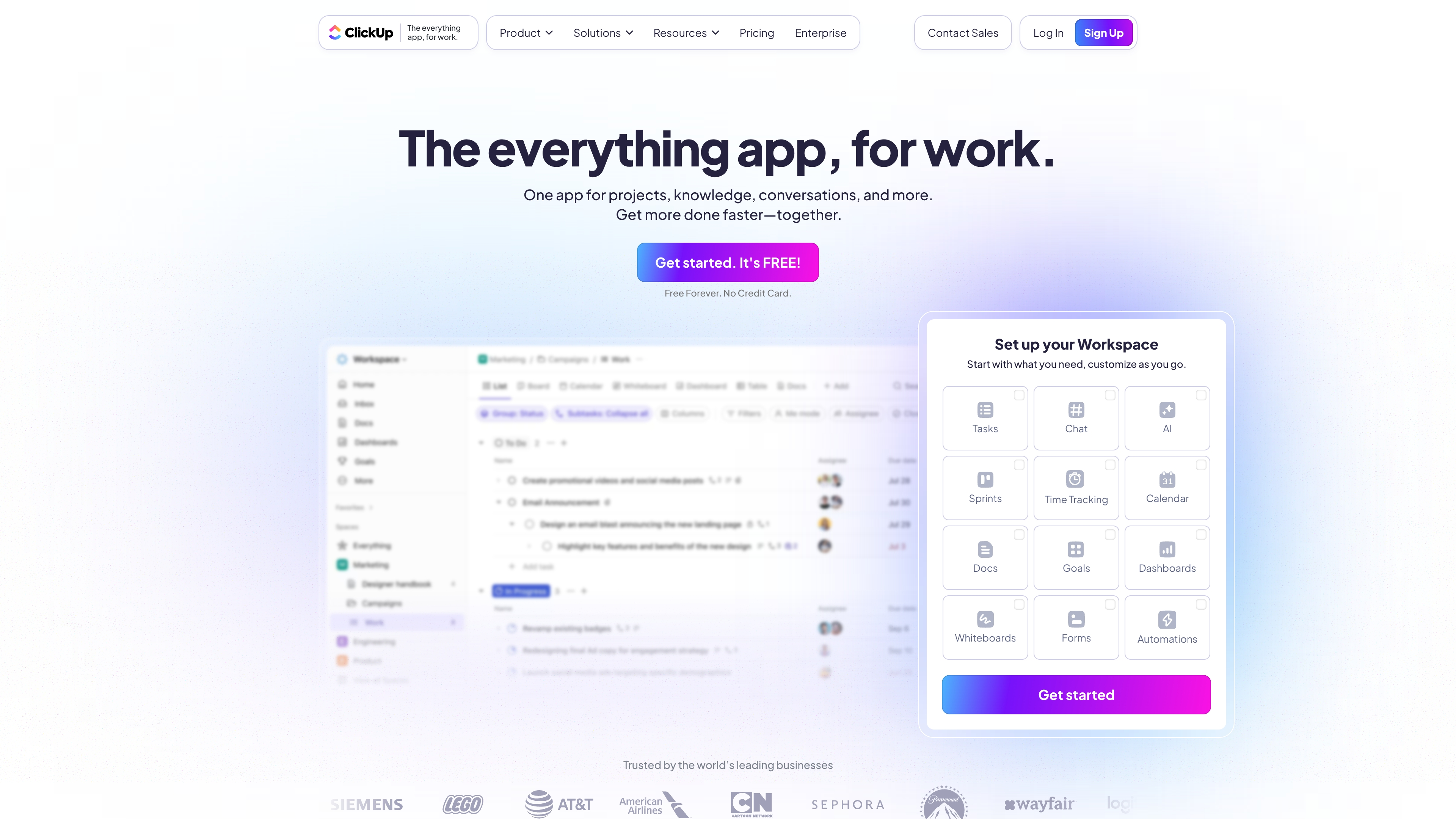
Use case: Organizations looking for a single hub to consolidate tasks, docs, and workflows
Key features
- Multiple project views including Gantt charts, Kanban boards, Calendar, and Timeline views for flexible workflow visualization
- ClickUp Brain AI assistant that automates tasks, summarizes content, and provides intelligent workflow recommendations
- Extensive automation capabilities with 200+ pre-built recipes to eliminate repetitive work and streamline processes
Pricing
- Free Forever: $0/month (unlimited tasks, collaborative docs, basic features)
- Unlimited: $7/user/month (unlimited storage, integrations, Gantt charts, time tracking)
- Business: $12/user/month (unlimited dashboards, advanced reporting, workload management)
- Enterprise: Custom pricing (white labeling, advanced permissions, SSO, dedicated support)
- Discounts available for nonprofits, students, educators, and startups
- 30-day money-back guarantee on all paid plans
Considerations
- Steep learning curve due to extensive feature set can overwhelm new users initially
- Performance issues may occur with large projects, particularly when using complex features like Gantt charts
Want to learn about ClickUp vs. monday work management? Read the in-depth comparison.
9. Zoho Projects
As a key component of the broader Zoho business ecosystem, Zoho Projects offers enterprise-level functionality at an accessible price point. The platform is particularly valuable for growing businesses that need robust project management without breaking the budget. With support for both traditional waterfall and agile methodologies, it adapts to diverse team workflows across industries.
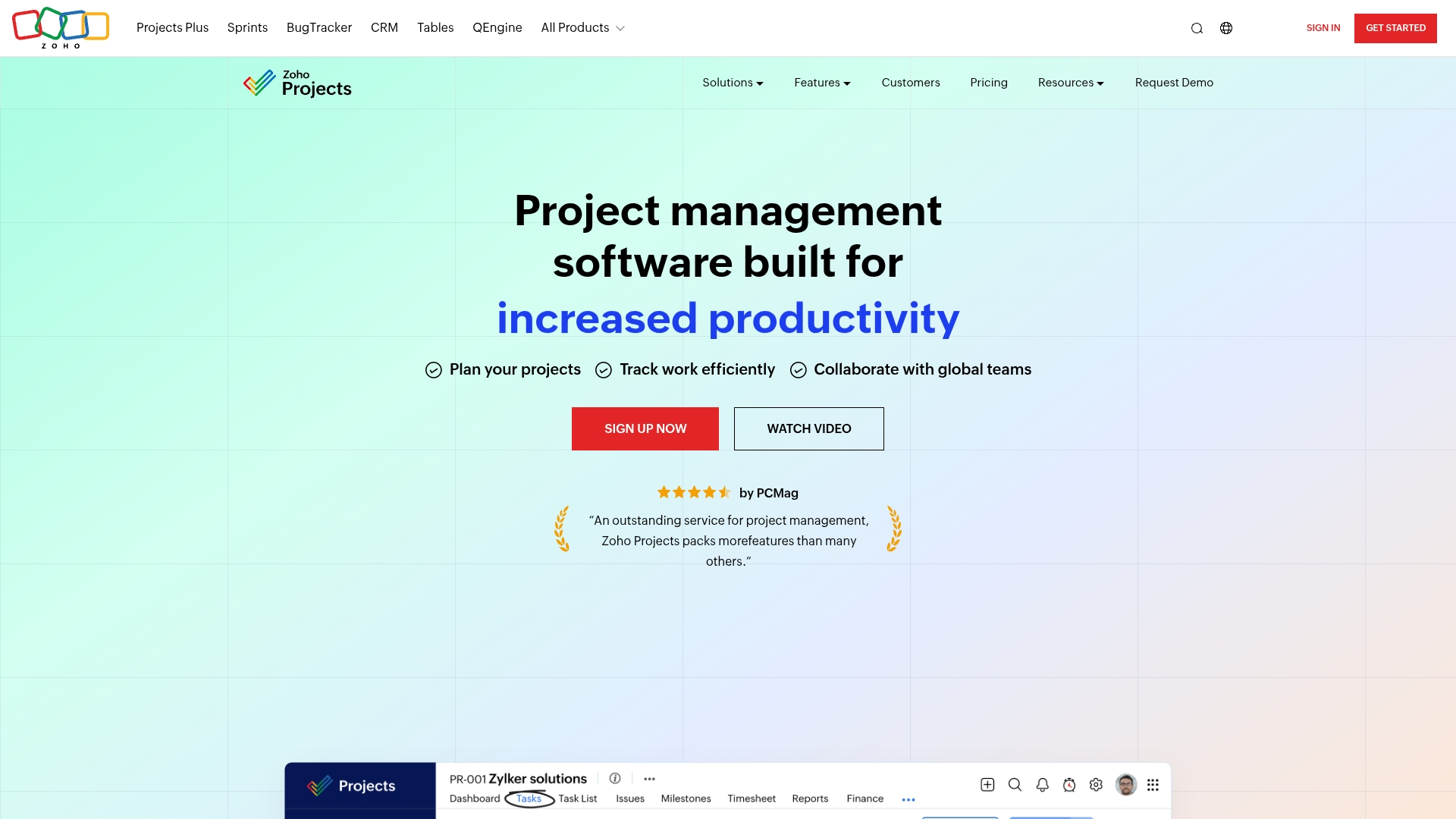
Use case: Growing companies needing to manage projects alongside CRM and finance systems
Key features
- Interactive Gantt charts with dependency tracking and real-time progress visualization
- Built-in time tracking with automated invoicing integration through Zoho Books and Zoho Invoice
- Comprehensive automation through blueprints and workflow rules that eliminate repetitive tasks
Pricing
- Free Plan: $0 for up to 5 users with 3 projects and 5 GB storage
- Premium Plan: $4/user/month (billed annually) with unlimited projects and 100 GB storage
- Enterprise Plan: $9/user/month (billed annually) with advanced security features and 120 GB storage
- Free 15-day trial available for paid plans
Considerations
- The extensive feature set can create a steep learning curve for new users
- Mobile app lacks some advanced features available on the desktop version
Curious how Zoho Projects measures up against monday work management? Explore our detailed head-to-head breakdown.
10. Nifty
Designed with agencies and remote teams in mind, Nifty unifies roadmaps, tasks, documents, and team communication to eliminate tool fatigue. This all-in-one project management platform specializes in automated progress reporting and intuitive design, providing a single workspace for streamlined collaboration.
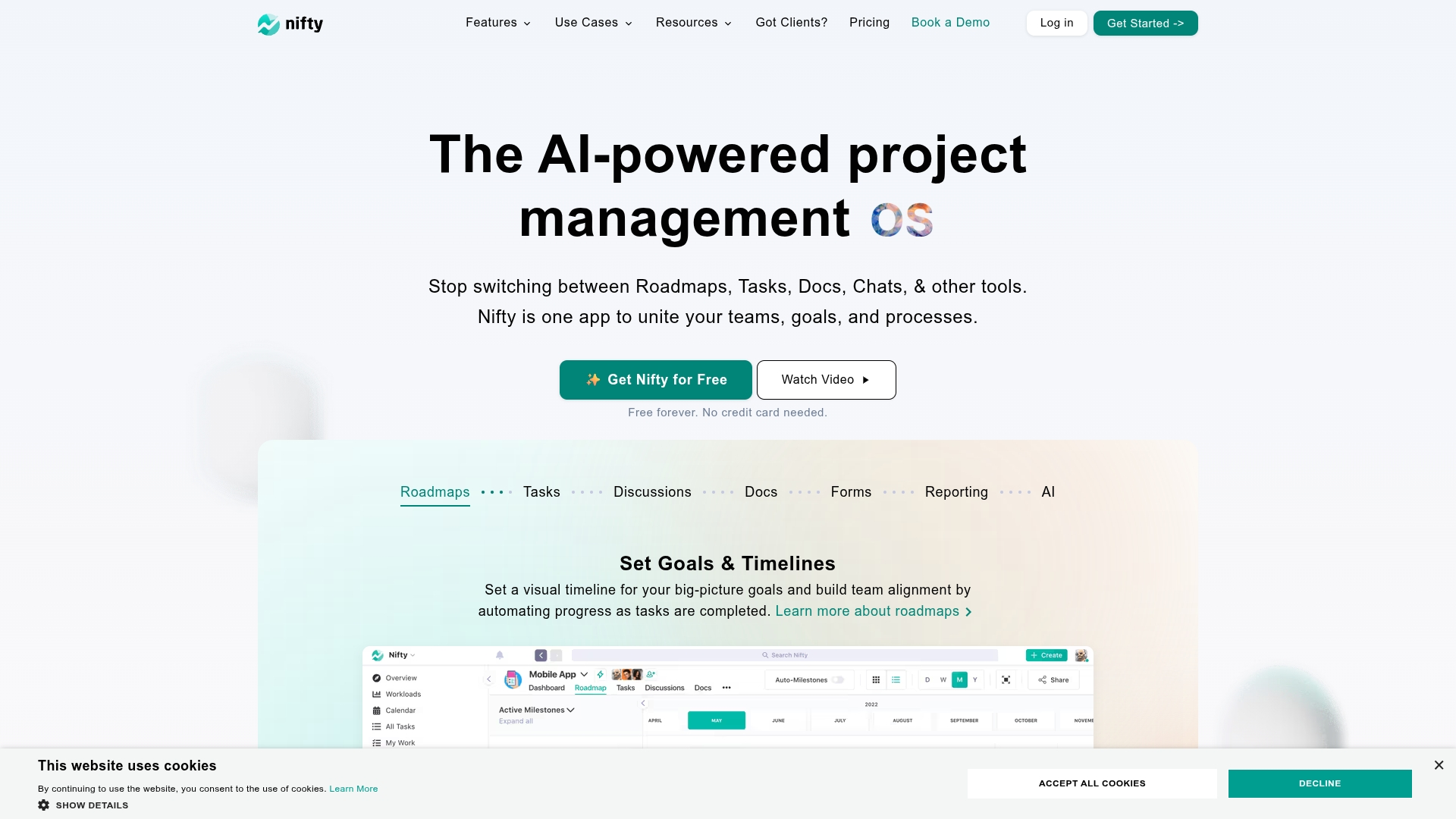
Use case: Distributed teams wanting to combine project planning, chat, and documentation
Key features
- Multiple project views including Kanban, Timeline, Calendar, and Swimlane for flexible workflow visualization
- AI-powered Orbit assistant that helps with project planning, task generation, and workflow optimization
- Built-in collaboration features with real-time discussions, video calls, and native Google Workspace integration
Pricing
- Free: $0 forever with unlimited members, 2 active projects, and 100 MB storage
- Personal: $7 per member per month with 40 active projects and time tracking
- Pro: $10 per member per month with workflow automations and file proofing
- Business: $16 per member per month with unlimited projects and advanced permissions
- Enterprise: Custom pricing with SAML integration and dedicated success manager
- Annual plans receive up to 45% discount
- 50% discount available for students, educational institutions, and nonprofits
Considerations
- Mobile app has limited functionality compared to the desktop version, which can impact productivity for teams working on-the-go
- Limited native integrations require third-party services like Zapier for many connections, potentially increasing overall costs
11. ServiceNow
ServiceNow transforms fragmented business processes into unified, automated workflows that drive enterprise-wide efficiency. The platform specializes in streamlining IT, HR, customer service, and more, making it the go-to choice for organizations ready to break down operational silos and accelerate digital transformation.
Use case: Enterprises seeking to automate, standardize, and orchestrate complex service workflows across IT, HR, and business operations
Key features
- Unified workflow automation for ITSM, HR, customer support, and business processes—all on a single cloud platform
- Powerful low-code/no-code app builder empowers teams to create and customize solutions without developer bottlenecks
- AI-driven analytics and predictive intelligence deliver actionable insights and automate routine tasks at scale
Pricing
Custom pricing based on selected solutions (ITSM, HR Service Delivery, Customer Service Management, and more)
Considerations
- Implementation complexity and time investment can be significant for large-scale deployments — dedicated change management is key
- Advanced features and integrations may increase total cost of ownership, so align platform investment with long-term digital strategy
12. Miro
The infinite digital canvas is Miro’s signature, providing a visual workspace for teams to transform scattered ideas into structured workflows. This platform specializes in real-time visual collaboration, making it ideal for enterprise teams who need to brainstorm, plan, and execute complex projects across distributed workforces.
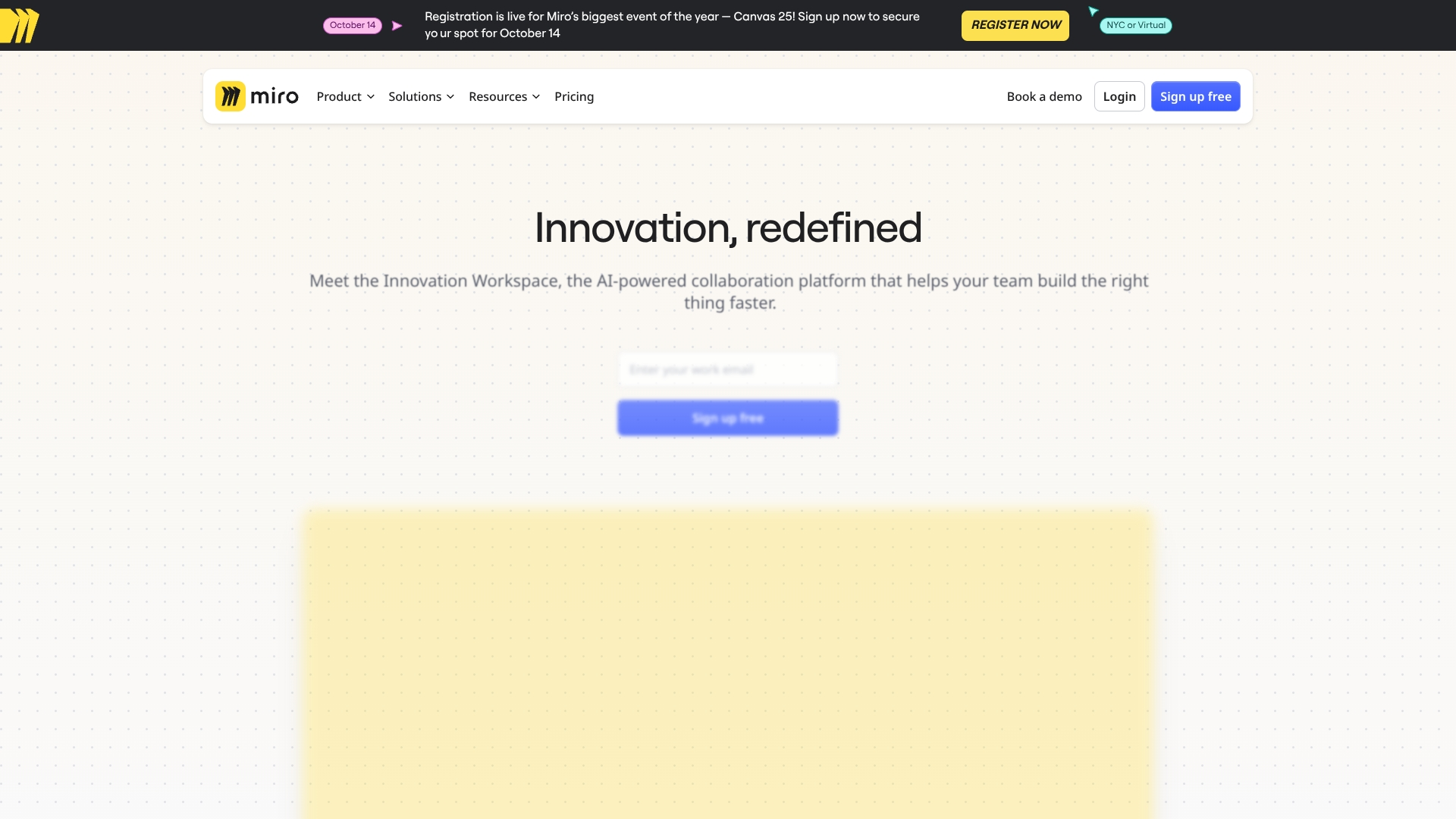
Use case: Enterprises wanting to brainstorm, plan, and map processes collaboratively
Key features
- Real-time visual collaboration with digital sticky notes, mind maps, and flowcharts on an infinite canvas
- 300+ ready-made templates including Kanban boards, Gantt charts, and project planning frameworks
- AI-powered content generation and summarization tools through the Innovation Workspace
Pricing
- Free: $0 with unlimited members, 3 editable boards, and 5,000+ templates
- Starter: $8/month per member (billed annually) with unlimited boards and advanced exports
- Business: $16/month per member (billed annually) with multiple workspaces and advanced diagramming
- Enterprise: Custom pricing starting at 30 members with enterprise-grade security and admin project controls
Considerations
- Performance can slow down significantly with very large or complex boards containing many elements
- Mobile app functionality is limited compared to desktop version, which can hinder on-the-go collaboration
13. Hive
What sets Hive apart is its user-driven development, creating a comprehensive project management platform that evolves based on community feedback. The platform delivers extensive collaboration capabilities powered by built-in AI and analytics, making it particularly valuable for organizations seeking a flexible, all-in-one solution that adapts to their workflows.
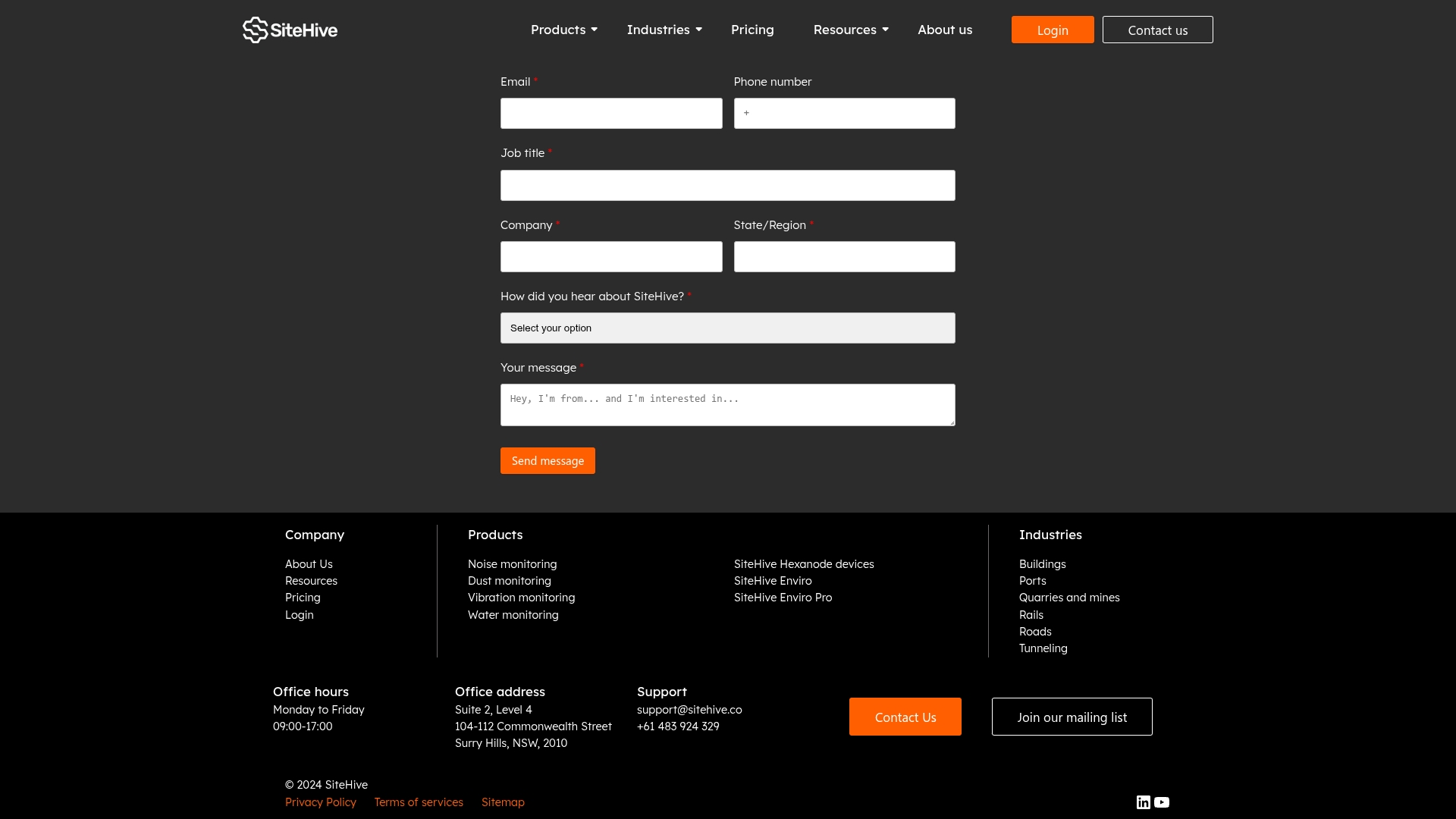
Use case: Teams needing to centralize projects, messaging, and task workflows
Key features
- Multiple project views including Kanban boards, Gantt charts, calendar views, and tables for flexible workflow visualization
- Built-in communication tools with real-time messaging, collaborative notes, and integrated email through “Hive Mail”
- HiveMind AI assistant that provides intelligent suggestions for project planning and task creation
Pricing
- Solo: Free for individual users with basic features
- Teams: $12/user/month (billed annually) with advanced collaboration features
- Enterprise: Custom pricing with additional security and admin controls
- Time tracking, analytics, and automation available as paid add-ons to main subscription plans
Considerations
- Essential features like time tracking and advanced analytics require additional paid add-ons, potentially increasing total cost of ownership
- Mobile app functionality is more limited compared to the desktop version, which may impact productivity for remote teams
14. Notion
Built on a flexible, block-based system, Notion provides a unified digital workspace where teams can build their own tools for planning, tracking, and execution. The platform specializes in this extreme customizability, making it ideal for organizations that need workflows tailored to their unique processes without jumping between tools. With over 100 million users worldwide, Notion has become the go-to choice for teams seeking an all-in-one enterprise software solution.
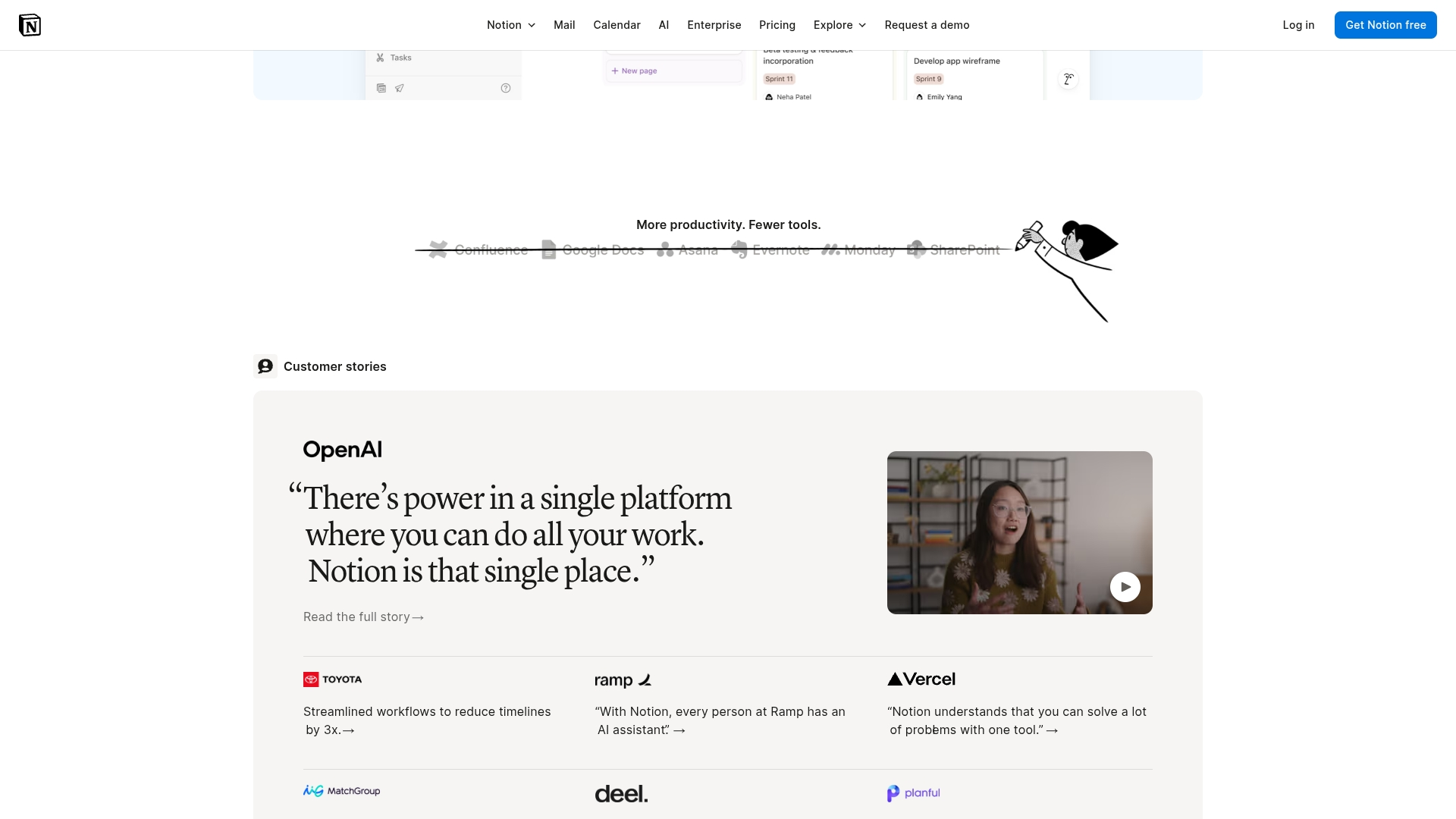
Use case: Enterprises looking for flexible workspaces to manage knowledge and projects
Key features
- Database-driven project management with multiple views including Kanban boards, timelines, and calendars
- AI-powered automation for content generation, task management, and workflow optimization
- Seamless integration with popular tools like Figma, Slack, GitHub, and Jira
Pricing
- Free: $0 per member/month for individuals with unlimited storage and limited team features
- Plus: $10 per member/month for small teams with unlimited collaborative blocks and file uploads
- Business: $20 per member/month including SAML SSO, private teamspaces, and Notion AI
- Enterprise: Custom pricing with advanced security controls, audit logs, and dedicated customer success manager
Considerations
- Performance can slow down significantly with large, complex databases and extensive content
- The extensive customization options create a steep learning curve that can overwhelm new users
15. Airtable
By blending the familiarity of a spreadsheet software with the power of a relational database, Airtable empowers teams to organize and connect their work in new ways. The platform specializes in flexible data management and custom workflow creation, making it ideal for teams who need to build applications without coding expertise.
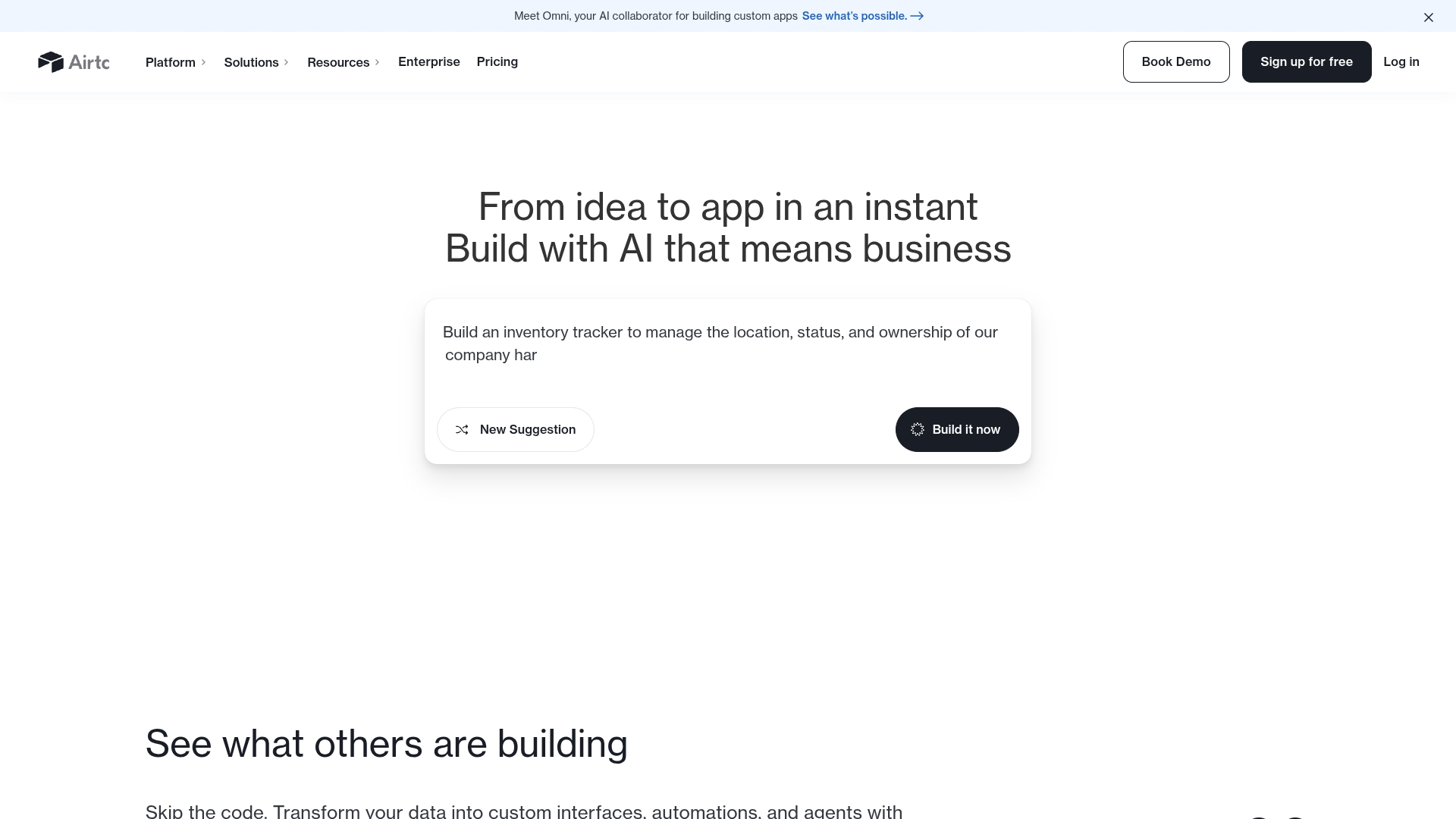
Use case: Organizations wanting to build custom apps for data tracking and workflows
Key features
- Hierarchical tracking across programs, projects, and tasks with both high-level rollups and detailed drill-downs
- Resource management with visibility into allocation and utilization to prevent burnout and optimize capacity
- 25+ field types and multiple data views including Gantt charts, Kanban boards, and timeline views for flexible data visualization
Pricing
- Free: $0 per user/month with 1,000 records per base and basic features
- Team: $20 per seat/month (billed annually) with 50,000 records per base and advanced features
- Business: $45 per seat/month (billed annually) with 125,000 records per base and premium integrations
- Enterprise Scale: Custom pricing with 500,000 records per base and enterprise-grade security
Considerations
- Steep learning curve to master advanced features and fully utilize the platform’s capabilities
- Pricing can become expensive compared to alternatives, especially when scaling to larger teams or requiring view-only access for many users
Airtable vs. monday work management: Explore the full side-by-side breakdown.
16. Adobe Workfront
Deeply integrated with Adobe’s creative ecosystem, Workfront is the definitive work management solution for marketing teams and creative departments. This comprehensive platform connects strategic planning to flawless execution across an entire organization, making it the go-to choice for managing complex campaigns and creative workflows.
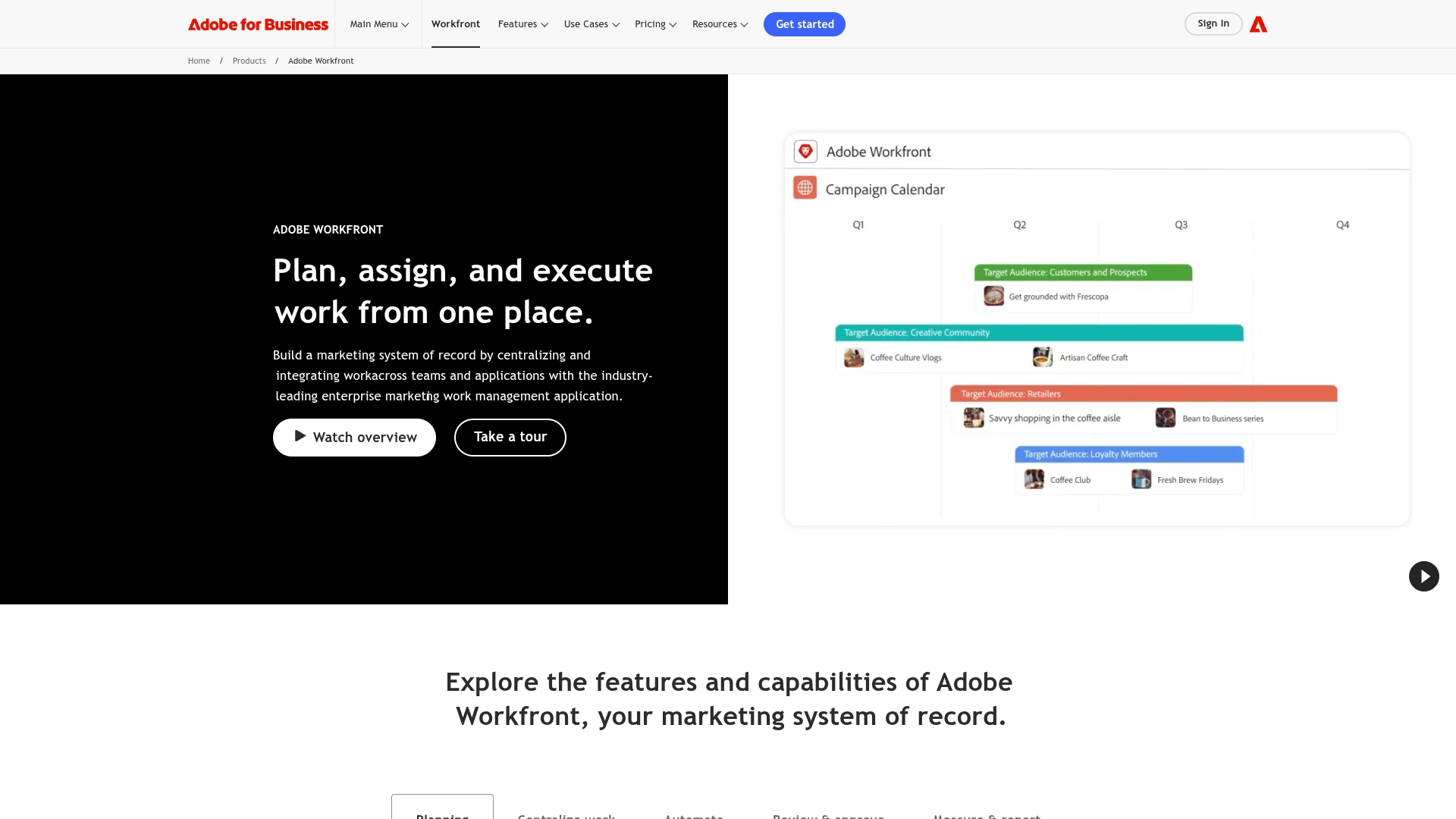
Use case: Enterprises needing to manage creative projects, approvals, and marketing operations
Key features
- Portfolio and project management with customizable dashboards and Gantt charts for strategic alignment
- Automated review and approval workflows with digital proofing capabilities for creative assets
- Resource management tools that balance workloads and allocate skills-based assignments across teams
Pricing
- Enterprise Pricing Contact Adobe for custom pricing
- Implementation: Professional services available for setup and configuration
- Add-ons: Workfront Fusion integration platform available separately
Considerations
- Steep learning curve with a complex interface that can overwhelm new users
- High price point may not justify value for organizations not fully utilizing its extensive enterprise features
17. Microsoft Project
A long-standing staple for professional project managers, Microsoft Project provides sophisticated scheduling and resource management for complex, enterprise-level initiatives. The platform specializes in advanced planning and deep Microsoft 365 integration, making it ideal for environments that demand detailed scheduling and robust resource allocation.
Use case: Large organizations seeking detailed scheduling and resource-heavy planning
Key features
- Advanced Gantt chart scheduling with critical path analysis and task dependency management
- Comprehensive resource allocation tools with workload balancing and capacity planning
- Seamless integration with Microsoft 365 ecosystem including Teams, SharePoint, and Power BI
Pricing
- Planner Plan 1: $10.00/month (billed annually)
- Planner and Project Plan 3: $30.00/month (billed annually)
- Planner and Project Plan 5: $55.00/month (billed annually)
- Project Standard 2024: $679.99 (one-time purchase)
- Project Professional 2024: $1,129.99 (one-time purchase)
Considerations
- Desktop versions have a steep learning curve that can overwhelm new users
- High licensing costs may be difficult to justify for smaller teams or simpler project needs
18. Workday
For organizations seeking to unify human resources, finance, and planning under one umbrella, Workday leads the way with a powerful, cloud-based platform. This all-in-one solution is designed for enterprises that need to connect workforce management, payroll, and financial operations, making it especially valuable for companies navigating rapid growth or complex global structures. Its intuitive, modern interface enables teams to manage people, processes, and business insights without the friction of legacy systems.
Use case: Large companies wanting to manage payroll, HR, and workforce planning at scale
Key features
- Unified human capital management (HCM) suite covering talent acquisition, performance management, learning & development, and workforce planning software capabilities
- Comprehensive financial management including accounting, procurement, expenses, and real-time analytics
- Advanced planning and analytics tools to align workforce and financial strategies, with built-in dashboards and customizable reports for actionable insights
Pricing
- Workday offers custom pricing based on organization size, selected modules, and deployment requirements
- Implementation and consulting services are available through Workday or certified partners
- Contact Workday directly for a tailored quote and demonstration
Considerations
- Initial implementation can be resource-intensive and may require dedicated change management for large organizations
- The platform’s depth and configurability mean some teams may face a learning curve during adoption, but the intuitive interface and robust customer support ease the transition
19. Microsoft Dynamics 365
Microsoft Dynamics 365 is a leading suite of intelligent business applications that seamlessly unifies CRM and ERP capabilities, empowering organizations to manage everything from sales and customer service to operations and finance — all in one connected platform. Built on Microsoft’s trusted cloud, it helps large enterprises break down silos, automate workflows, and gain real-time insights that drive confident decision-making and business growth.
Use case: Enterprises seeking to unify sales, customer service, finance, operations, and marketing in one scalable, cloud-based solution.
Key features
- End-to-end business process automation covering sales, marketing, finance, operations, service, and supply chain
- AI-powered insights for forecasting, customer engagement, and process optimization, empowering leaders to make data-driven decisions
- Advanced security, compliance, and governance controls built for enterprise-scale organizations
Pricing
- Modular pricing model: Purchase individual apps (such as Sales, Customer Service, Finance, Supply Chain, Project Operations) starting at $65–$180 per user/month (billed annually)
- Custom bundles available for organizations needing multiple modules; pricing varies by configuration and user count
- Free trials available for most Dynamics 365 applications
Considerations
- Comprehensive feature set and flexibility require careful planning for implementation—dedicated change management helps drive adoption
- Pricing can scale quickly as you add modules and users, so it’s important to align your technology investment with current and future business needs
20. GanttPro
Centered around powerful and intuitive Gantt charts, GanttPro brings visual clarity to complex, timeline-driven projects. The platform specializes in project visualization and Enterprise resource management, making it ideal for teams in construction, IT, and manufacturing industries where timelines are critical.
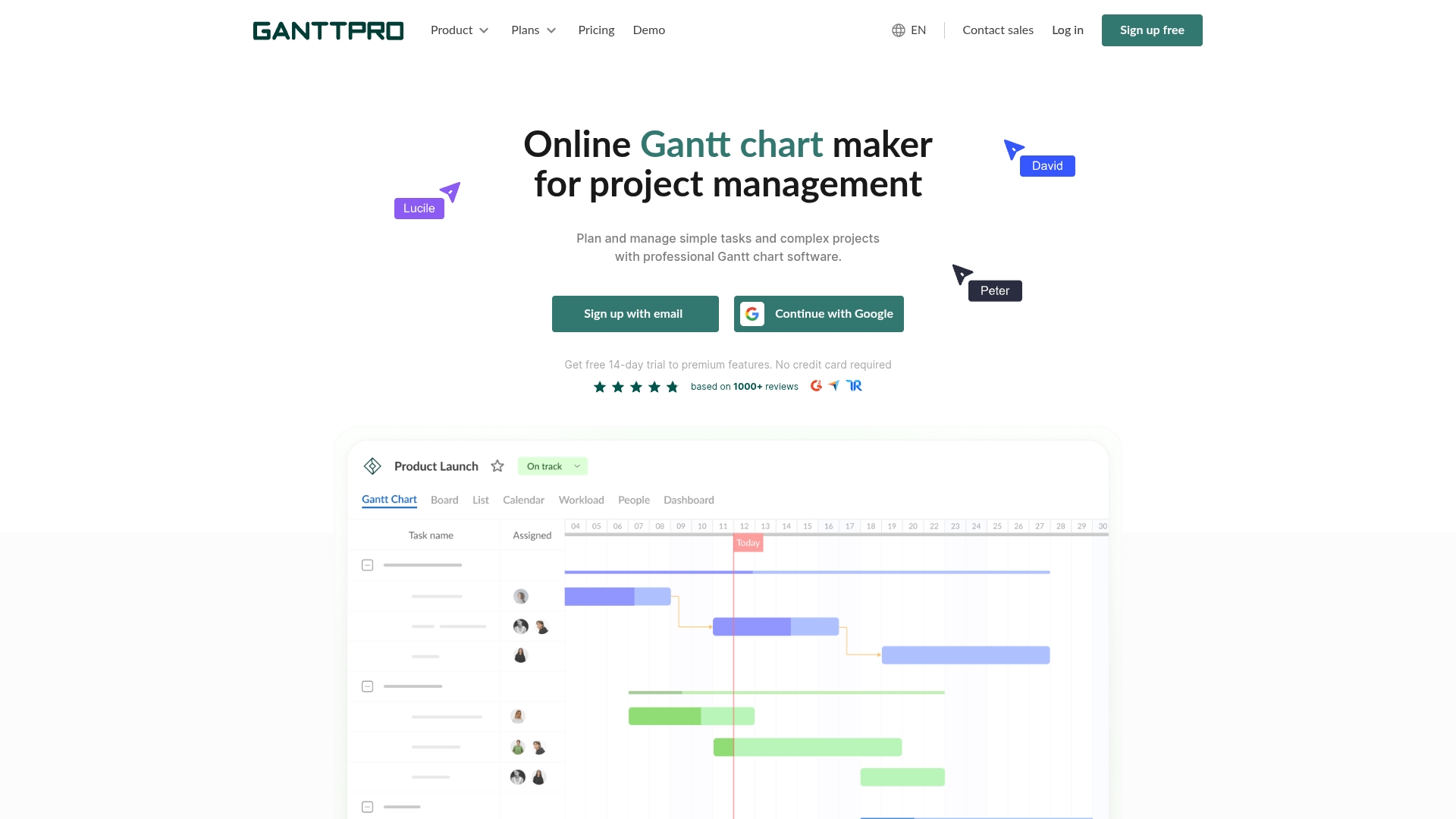
Use case: Teams needing to visualize timelines and dependencies with Gantt charts
Key features
- Dynamic Gantt charts with auto-scheduling and critical path analysis for timeline optimization
- Resource and workload management with drag-and-drop adjustments to prevent team overallocation
- Portfolio management dashboard providing high-level visibility across multiple projects simultaneously
Pricing
- Core: $7/month per user (billed annually) – Basic project management with Gantt charts and auto scheduling
- Advanced: $10/month per user (billed annually) – Adds custom fields, filters, and project templates
- Business: $17/month per user (billed annually) – Includes workload management, portfolios, and budget planning
- Enterprise: Custom pricing – Features SAML SSO, custom roles, and priority support
- 50% discount available for health, educational, and non-profit organizations
- Free 14-day trial with no credit card required
Considerations
- Limited communication features compared to comprehensive work management platforms, lacking centralized announcement capabilities
- No native billing or invoicing functionality, requiring integration with external financial management systems
21. ProjectManager
By combining traditional planning tools with modern collaborative features, ProjectManager excels in hybrid work management for complex enterprise projects. The platform delivers comprehensive capabilities with powerful reporting and dashboard features, making it ideal for teams in manufacturing, construction, and IT sectors.
Use case: Organizations wanting to balance traditional planning with modern dashboards
Key features
- Multiple project views including Gantt charts, Kanban boards, task lists, and calendar views for flexible project visualization
- Real-time dashboards with customizable widgets that provide live data on project progress, team workload, and key performance metrics
- Advanced resource management tools for allocating resources, managing workloads, and tracking team availability to prevent bottlenecks
Considerations
- Higher cost structure with minimum user requirements for some plans may not be cost-effective for smaller teams
- Mobile app has limited functionality compared to the desktop version, which can impact remote team productivity
22. Zenhub
Operating directly within the GitHub interface, Zenhub enhances the platform into a full-featured project management solution for software development teams. It specializes in this native integration, keeping developers in their preferred environment while also bringing non-technical team members into the workflow.
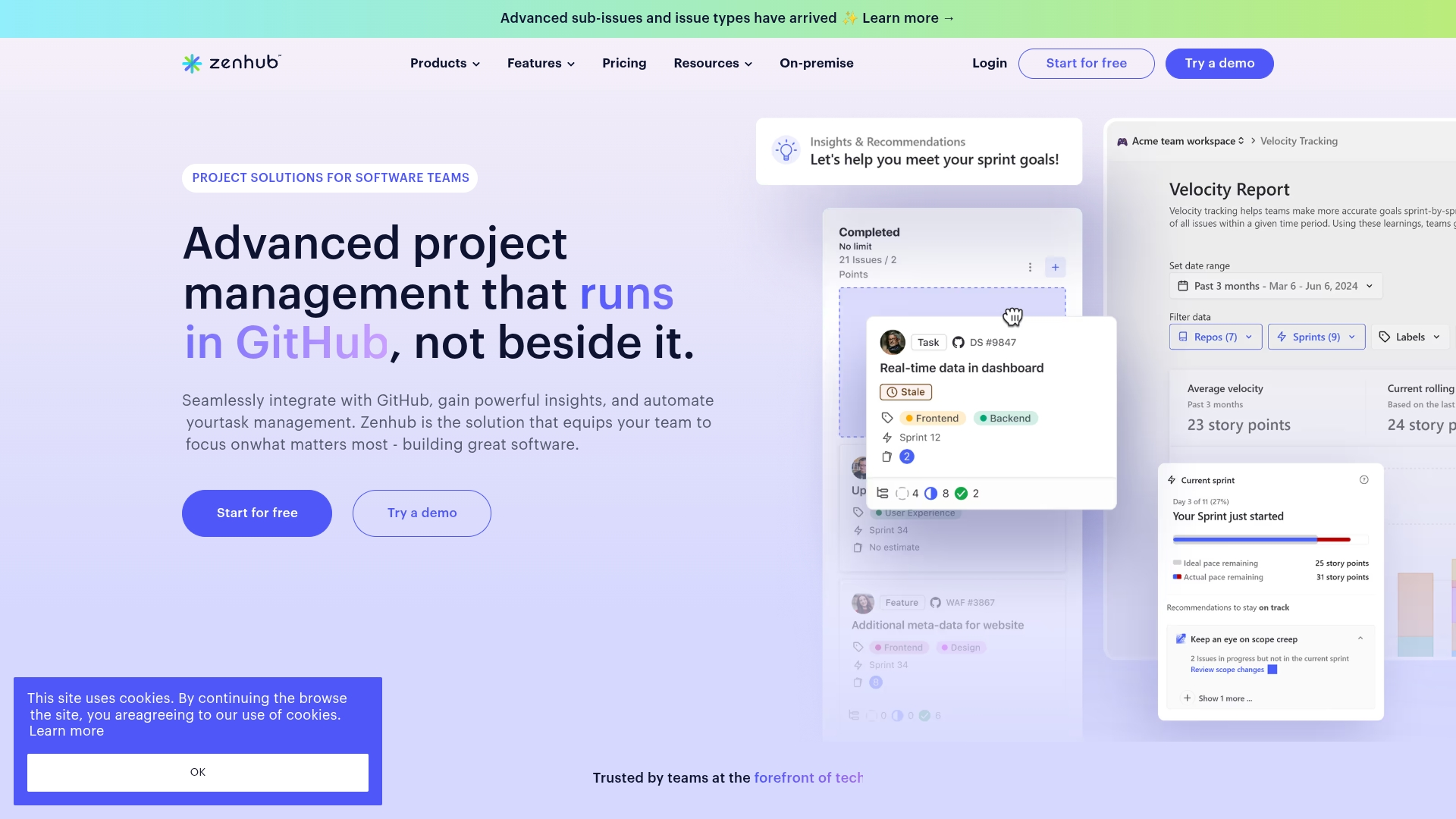
Use case: Development teams needing to manage sprints and roadmaps inside GitHub
Key features
- Native GitHub integration with real-time sync, keeping developers and non-technical teams aligned in one workspace
- Kanban boards and roadmaps that visualize sprints, project timelines, and progress at every level
- AI-powered assistance for sprint planning, issue creation, and generating actionable summaries to accelerate delivery
Pricing
- Free Plan: $0/month for up to 50 users, including 1 workspace, 2 connected repositories, and up to 250 issues.
- Teams Plan: $8.33/month per user (billed annually). Includes up to 10 workspaces, 50 connected repositories, and unlimited issues.
- Enterprise Plan: Custom pricing. Includes all Teams features plus unlimited users and workspaces, advanced security, custom reports, and dedicated support.
- Annual billing provides a 33% discount.
- Free trials are available for 14 days (Teams) or 60 days (Enterprise).
Considerations
- Primarily designed for teams using GitHub, which may not suit all organizations
- Performance can sometimes be affected when linking a large number of repositories
23. Salesforce
As the dominant force in the CRM market, Salesforce provides a comprehensive platform for unifying sales, service, marketing, and commerce data. It specializes in creating complete customer visibility, making it the go-to choice for enterprises seeking to manage complex customer journeys at scale. With over 22% market share, Salesforce has become the backbone for countless organizations.
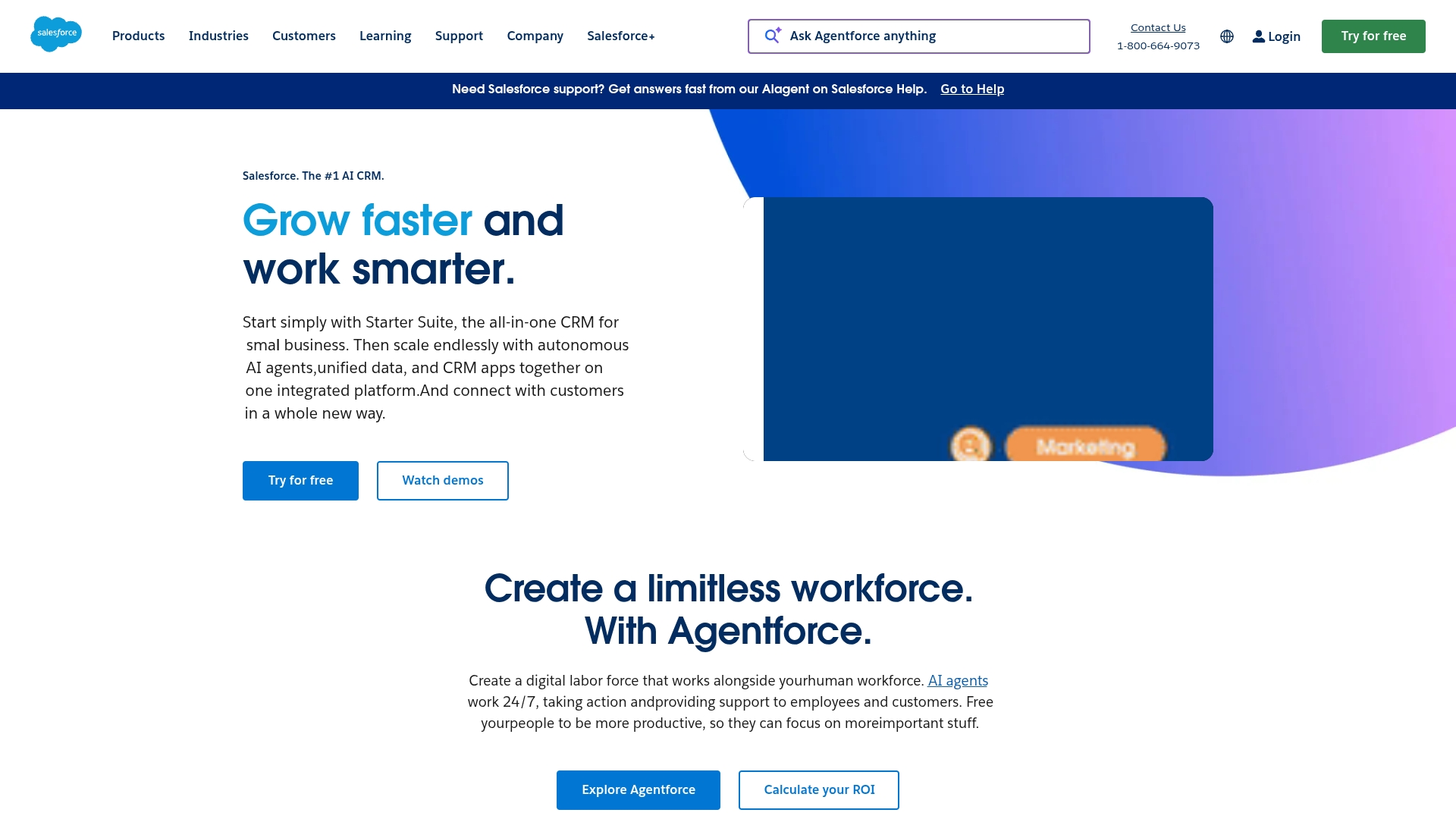
Use case: Enterprises looking for a platform to unify customer data, sales, and service
Key features
- Customer 360 platform that unifies all customer touch points and data in one comprehensive view
- AI-powered Einstein analytics that provide predictive insights and automate routine tasks across all business functions
- Extensive AppExchange marketplace with thousands of third-party integrations and specialized applications
Pricing
- Salesforce Starter: Contact sales for pricing (designed for small businesses)
- Professional editions: Varies by product (Sales Cloud, Service Cloud, Marketing Cloud)
- Enterprise editions: Custom pricing based on business size and requirements
- Field Service Dispatcher: $175/month per user (billed annually)
- Field Service Technician: $175/month per user (billed annually)
- Agentforce 1 Field Service: $650/month per user (includes full AI suite and advanced analytics)
Considerations
- Complex pricing structure with multiple product tiers can make total cost of ownership difficult to predict upfront
- Steep learning curve for new users due to the platform’s extensive customization options and feature depth
Curious about monday work management vs. Salesforce? Check out our side-by-side comparison.
24. Oracle NetSuite
As a cloud-based enterprise resource planning (ERP) platform, Oracle NetSuite unifies financials, project management, and customer relationships into a single, integrated system. It transforms scattered business operations into a command center where every department works from the same playbook, making it particularly powerful for growing companies that need enterprise-grade capabilities without the complexity.
Use case: Companies wanting to integrate ERP, CRM, and financial operations in the cloud
Key features
- SuiteProjects module offers end-to-end project lifecycle management with work breakdown structures, resource allocation, and real-time financial tracking
- Unified data model connects project performance directly to financial outcomes, providing instant visibility into profitability and budget status
- Professional services automation streamlines everything from opportunity management to client billing and revenue recognition
Pricing
- Subscription-based annual licensing with 3 components: core platform, optional modules, and user count
- One-time implementation fee for initial setup
- Custom pricing requires contacting NetSuite for a personalized quote based on specific business requirements
Considerations
- Learning curve can be steep due to the comprehensive nature of the ERP system, with some users requesting more learning resources
- User interface could be more modern and intuitive according to customer feedback
25. HubSpot
Built around the inbound marketing methodology, HubSpot’s all-in-one CRM platform unifies marketing, sales, and customer service operations for growing businesses. The platform specializes in seamless data integration, making it ideal for teams who want their project work connected directly to customer relationships.
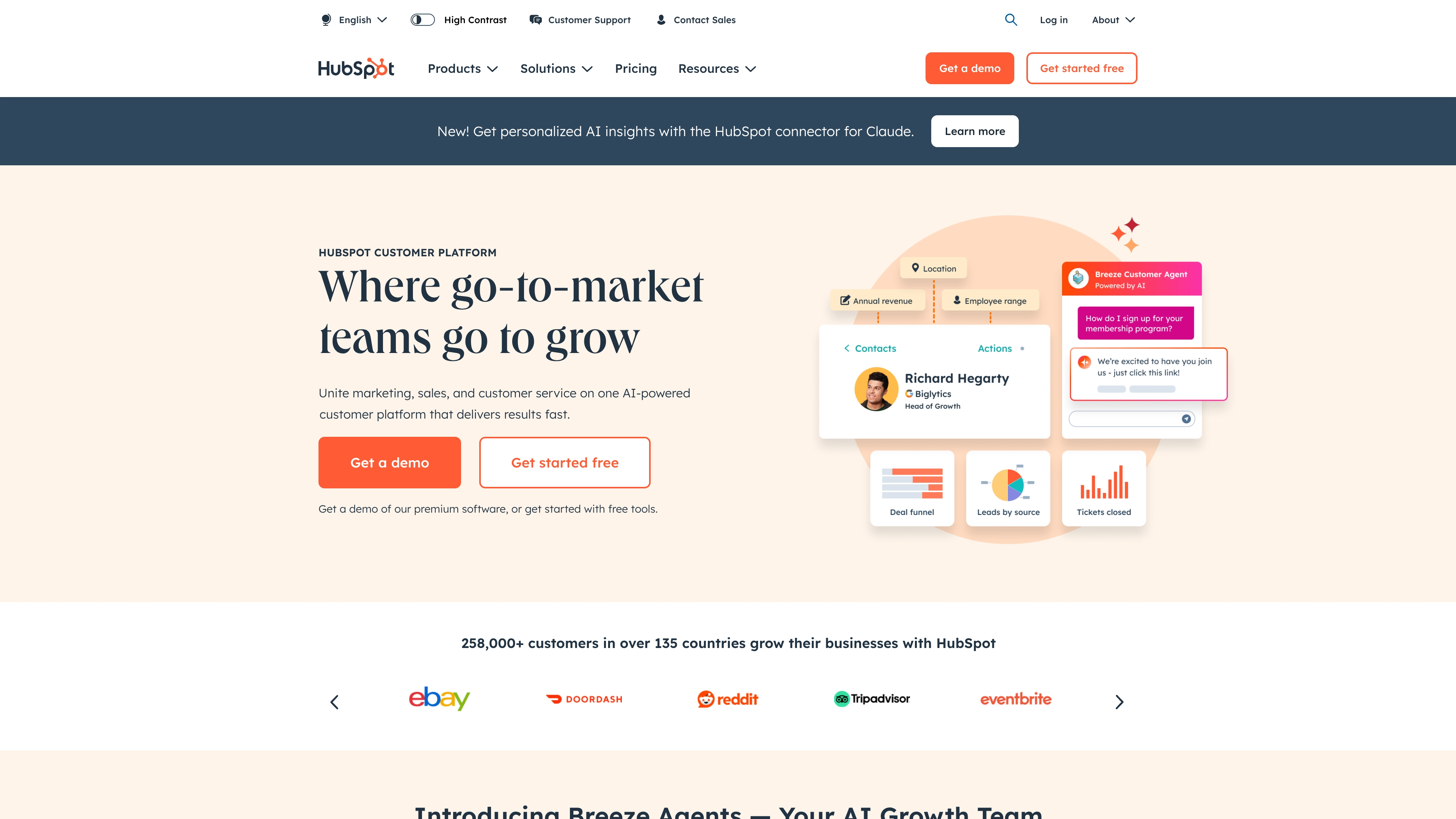
Use case: Growing enterprises seeking to connect marketing, sales, and service workflows
Key features
- Task management with direct CRM integration that links every project activity to customer records
- Project templates designed specifically for marketing campaigns and sales processes
- Automated workflow creation that triggers tasks based on customer interactions and deal stages
Pricing
- Free: Includes basic CRM and task management features
- Paid Plans: Starter, Professional, and Enterprise tiers are available, offering more advanced features as you scale.
Considerations
- Project management features are relatively basic compared to dedicated work management platforms
- The dedicated Projects tool and other advanced project functionality are only available in the Professional and Enterprise plans
HubSpot vs. monday work management: Read our head-to-head comparison.
5 steps to choose the right software for enterprise growth
Selecting the right software is a strategic decision that lays the foundation for your team’s best work. The ideal platform connects every individual to the overarching strategy, transforming scattered efforts into a unified force of execution. It empowers your people to move faster and with greater confidence.
View this process not as buying a tool, but as architecting a system for growth. The most effective platforms solve today’s challenges while providing the flexibility to seize tomorrow’s opportunities. This 5-step guide will help you find the perfect fit and make a choice you can stand behind.
Step 1: Define what success looks like
Before evaluating any software, first look inward. Gain absolute clarity on your most critical business goals and the specific outcomes required to achieve them. The right platform doesn’t just solve problems; it creates a direct, measurable line between your team’s daily work and your highest company objectives.
Bring leaders from every department into the conversation to map out their ideal outcomes. From finance tracking budgets to marketing launching campaigns, a unified platform should give every team the visibility and tools they need to win. This alignment is the key to making a real impact.
Step 2: Nail your security and tech needs
Your work platform must be both powerful and secure, fitting seamlessly into your existing technical environment. Look for enterprise-grade security that protects your data and meets compliance standards without slowing your teams down. This is about building trust in your systems from the ground up.
A great platform should give your IT team peace of mind with robust governance and security controls. It needs to be a partner in protecting your organization, adapting to new threats while remaining simple and intuitive for everyone to use.
Step 3: Plan for seamless integration and growth
A platform you’ll outgrow is a roadblock to your ambition. Your work hub should connect to the tools you already use and love, creating one central place for everything. This isn’t just about convenience; it’s about building a scalable foundation that grows with you.
This is where a Work OS shines, designed to unify your people, tools, and data. Its flexible architecture lets you start with what you need today and easily expand, ensuring your platform is always an accelerator for your business, not a limitation.
Step 4: Prioritize an experience people love
The most advanced features are worthless if your team avoids using the platform. Choose a solution that feels intuitive and welcoming from day one, encouraging adoption across the entire organization. A superior user experience translates to less time on training and more time making an impact.
Look beyond the interface to the entire support experience, from implementation to ongoing help. The right platform should feel like a natural part of your team’s workflow, making work simpler and more engaging for everyone involved.
Step 5: Test it out and track the impact
Now it’s time to put the platform to the test with a pilot program. Get a team running real projects on the software to see how it performs in the real world. This is your chance to measure what matters most, whether it’s faster project delivery, more direct communication, or higher team morale.
Use the feedback from your pilot team to build a smart rollout plan that sets everyone up for success. A successful test run gives you the confidence and the data to prove you’re making the right investment for your organization’s future.
Try monday work managementKey enterprise application categories
Most organizations run on a mix of powerful software, but these disconnected applications often create more chaos than alignment. When each department operates from its own system, the result is data silos and constant context switching that stalls progress. The objective isn’t just to possess the right applications, but to orchestrate them in perfect sync.
Consider your core systems — from CRMs managing customer relationships to ERPs handling finance and operations. While each is a powerhouse in its own right, they frequently operate in isolation. This forces your teams to spend more time hunting for information than actually moving work forward.
Real momentum begins when you connect these essential functions on a single, flexible work platform. Creating one source of truth gives everyone the full picture, replacing scattered tasks with streamlined execution. This is how you empower your teams to deliver their best work, faster and with total confidence.
Why many enterprises rely on monday work management
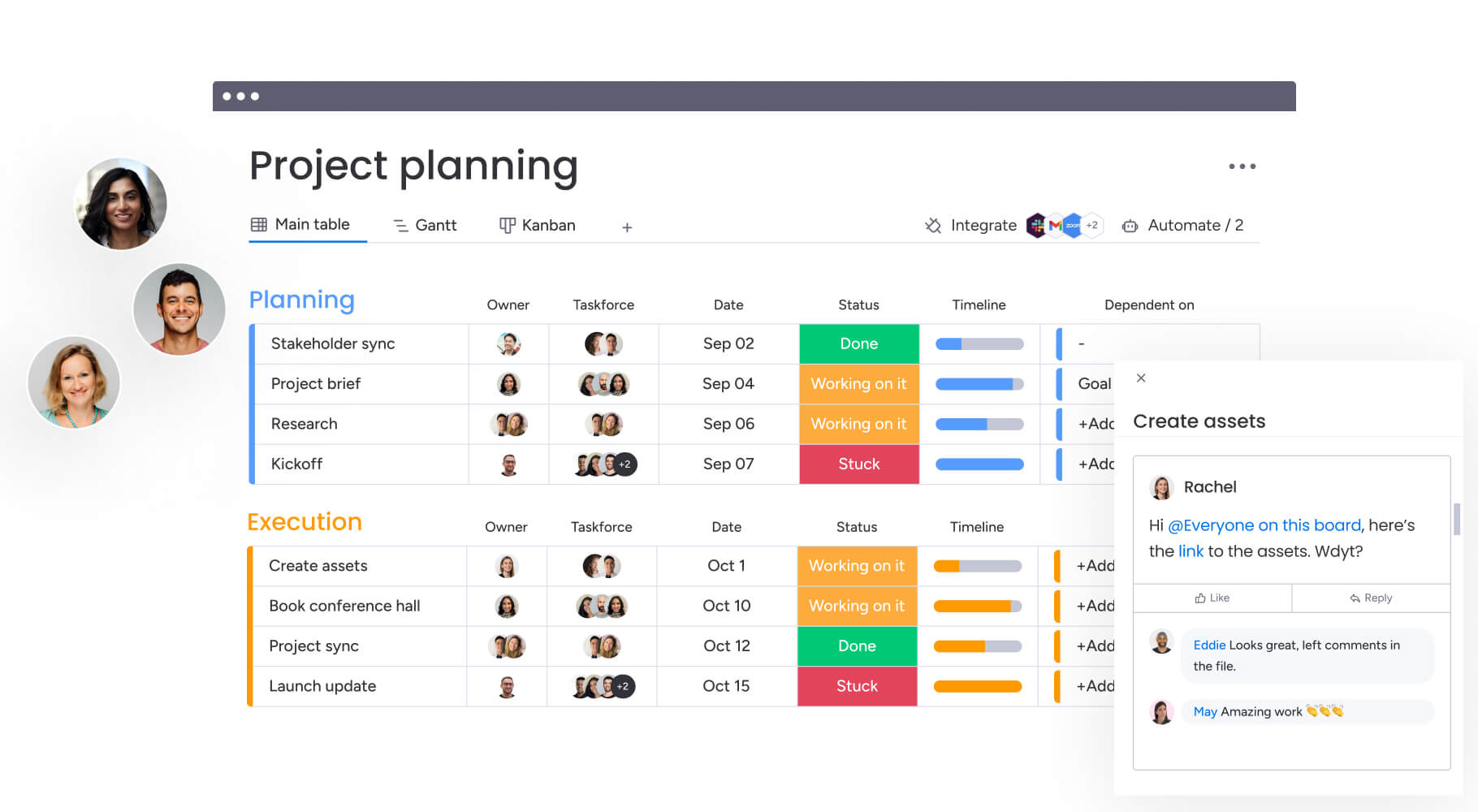
When your work is scattered across endless apps and spreadsheets, momentum grinds to a halt. Teams waste valuable time searching for updates, projects stall, and leaders lose real-time visibility into what’s happening. This kind of fragmentation is the enemy of growth, breeding confusion, bottlenecks, and missed opportunities.
monday work management unifies every workflow, project, and department in one intuitive . It flexes to fit your organization’s unique needs, empowering teams to collaborate in real time, automate manual processes, and focus on the high-impact work that drives results.
Here are 5 reasons why leading enterprises choose monday work management:
- Centralized, visual workspace: Bring every team, task, and process together in one customizable hub. Gain instant visibility and control across your entire organization, so nothing falls through the cracks.
- Powerful automations: Eliminate repetitive work with no-code automations that keep projects moving and your teams focused on what matters most.
- AI-powered productivity: monday AI surfaces risks, generates actionable project plans, and streamlines workflows, making your organization smarter and more agile.
- Enterprise-grade security & compliance: Robust permissions, advanced security controls, and compliance features protect your data at every stage as you scale.
- Seamless integration ecosystem: Effortlessly connect with 200+ popular integrations, so your teams don’t have to switch between platforms to get work done.
By creating a true single source of truth — powered by automation, intelligence, and effortless collaboration — monday work management helps your teams move faster, stay aligned, and deliver results with complete confidence.
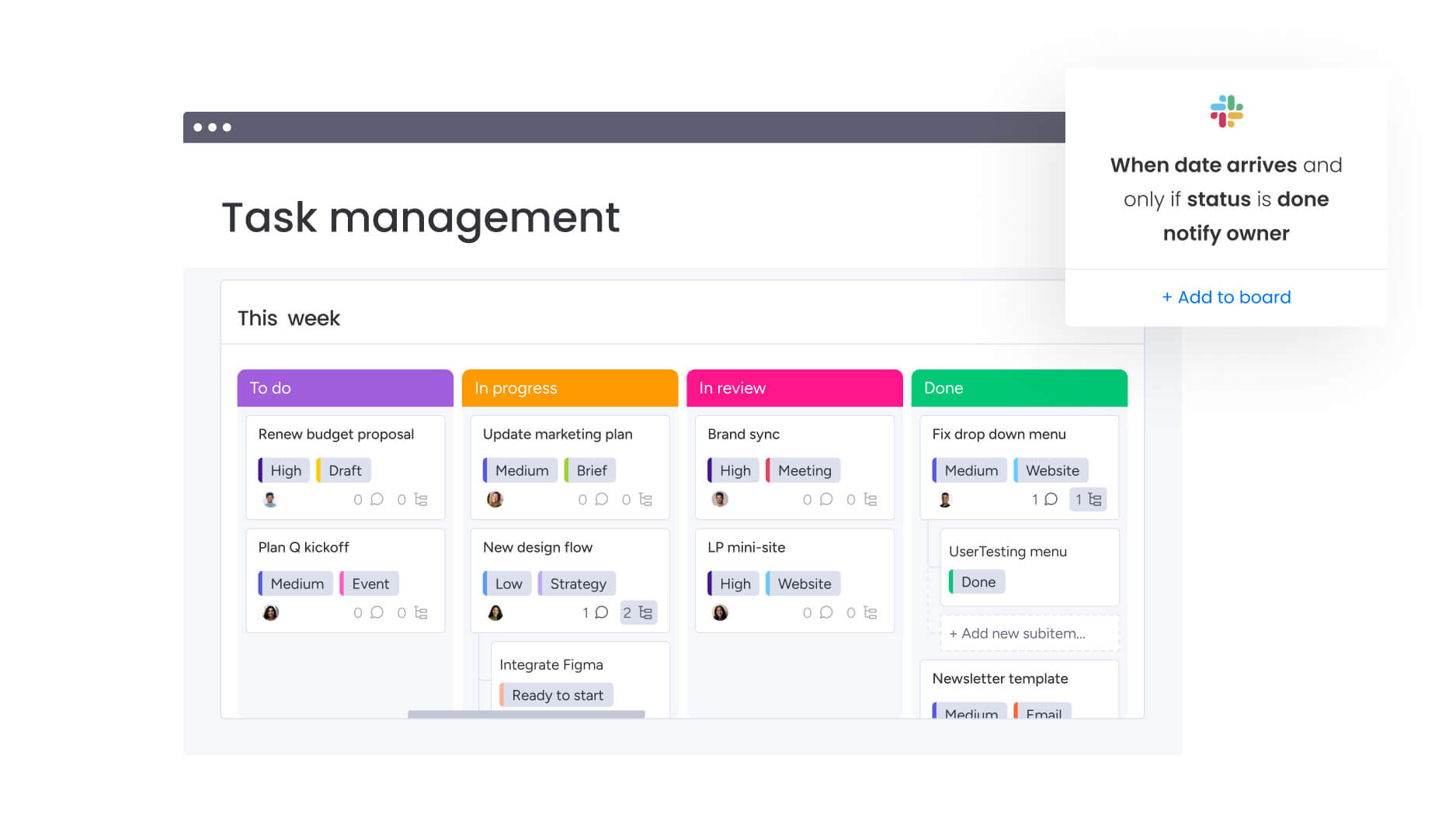
Streamline operations with enterprise computing software
Your team’s potential often gets lost between too many apps and work that feels disconnected from the big picture. Choosing a new platform isn’t about adding more features; it’s about finding a better way to work that delivers real, streamlined execution.
Imagine a central hub where your team’s work flows seamlessly, breaking down silos and connecting every project to your goals. This unified space gives you the power to automate the busywork and provides the focus your team needs to make an impact, not just coordinating processes.
It’s time to trade scattered efforts for streamlined success. Get started with monday work management and see how the right platform brings your team’s best work into focus.
Try monday work managementFAQs
What is enterprise software vs. SaaS?
The difference between enterprise software vs. SaaS is that enterprise software is built for large-scale organizational complexity, while SaaS is a cloud-based delivery model. Most modern enterprise platforms, like monday work management, are delivered as SaaS to provide both power and flexibility.
Which industries benefit most from enterprise application software?
Any industry with complex operations benefits, but the true indicator is need, not sector. When your cross-functional workflows have outgrown simpler tools, it’s time to upgrade to an enterprise solution.
How do you handle data migration to enterprise software?
Successful data migration requires a clear strategy to clean, map, and test your data before going live. The best platforms provide tools and dedicated support to simplify this structured process.
What is an example of enterprise software for AI-driven tasks?
monday work management uses AI to automate repetitive work, like generating tasks or summarizing updates. This frees up your teams to focus on strategic, high-impact activities.
How does enterprise software factor into digital transformation?
Enterprise software is the backbone of digital transformation, unifying siloed systems and data into a single source of truth. It provides the operational framework needed to modernize how your entire organization collaborates and executes.
Which enterprise software is best for analytics and reporting?
Popular enterprise software options for analytics and reporting include monday work management, Power BI, IBM Cognos, and SAP Analytics Cloud, which give leaders real-time visibility into data trends and performance.
 Get started
Get started 

